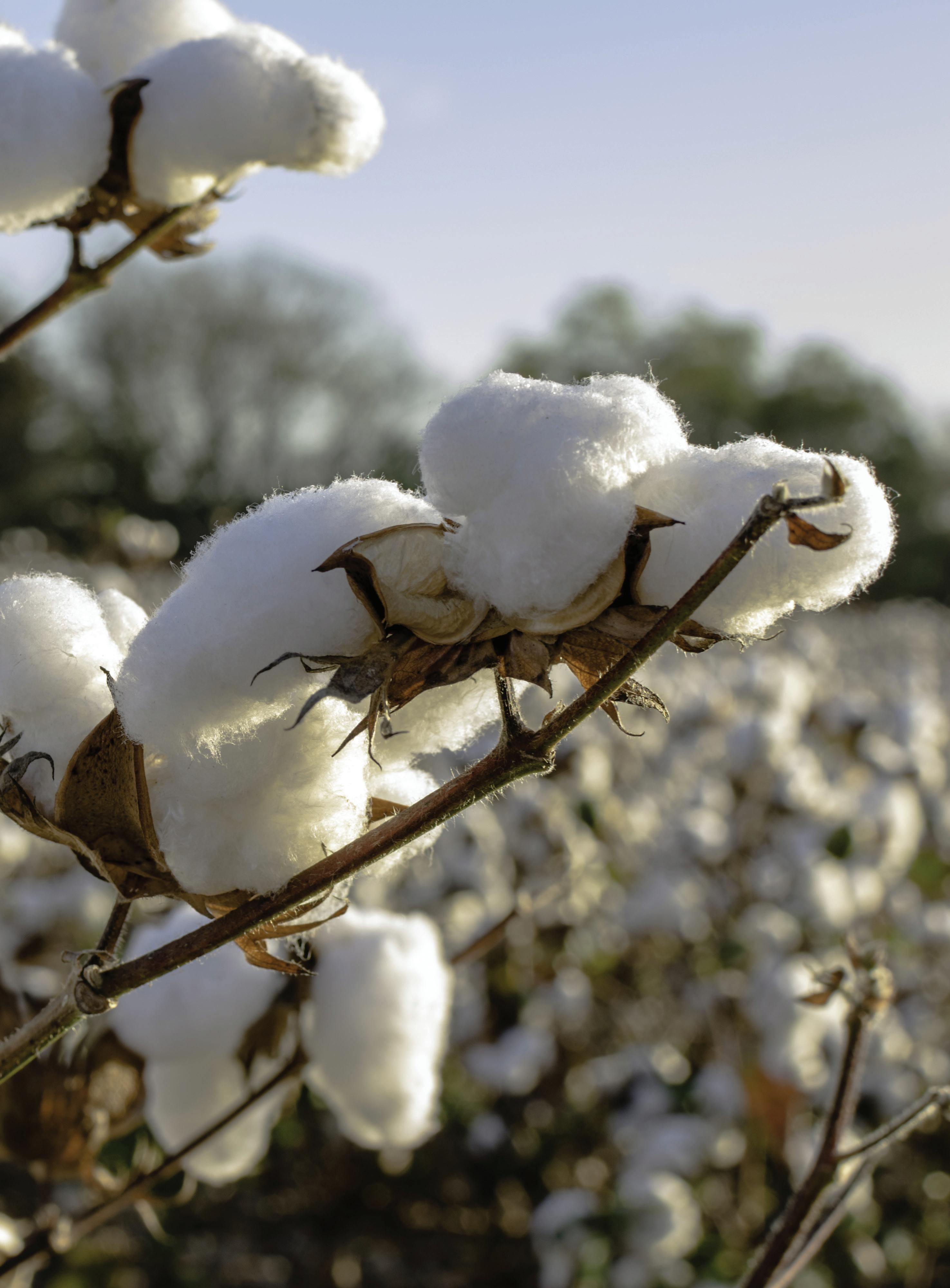
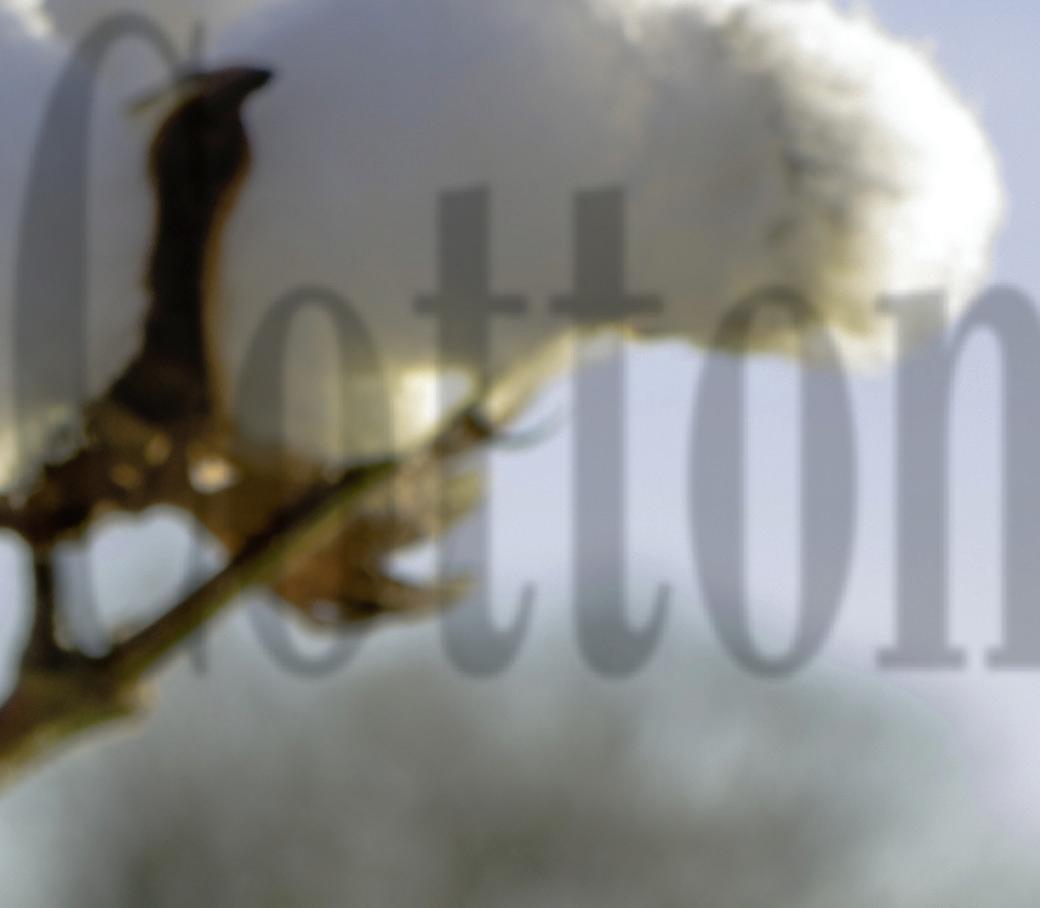
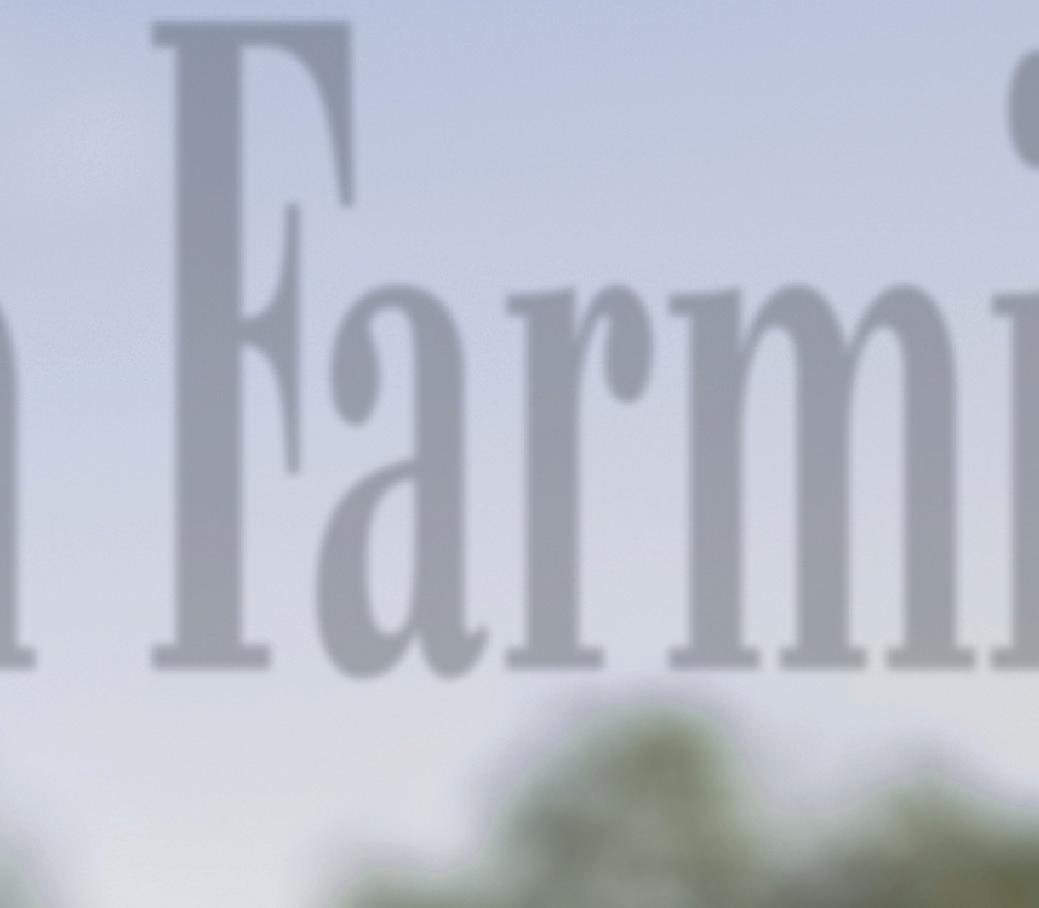



PROFITABLE PRODUCTION STRATEGIES www.cottonfarming.com ONE GROWER PUBLISHING, LLC NOVEMBER 2022 VARIETY SEED 2023 GUIDE Consultants’ Conference Set For 2023 Beltwide In New Orleans State Specialists Discuss End-Of-Season Considerations
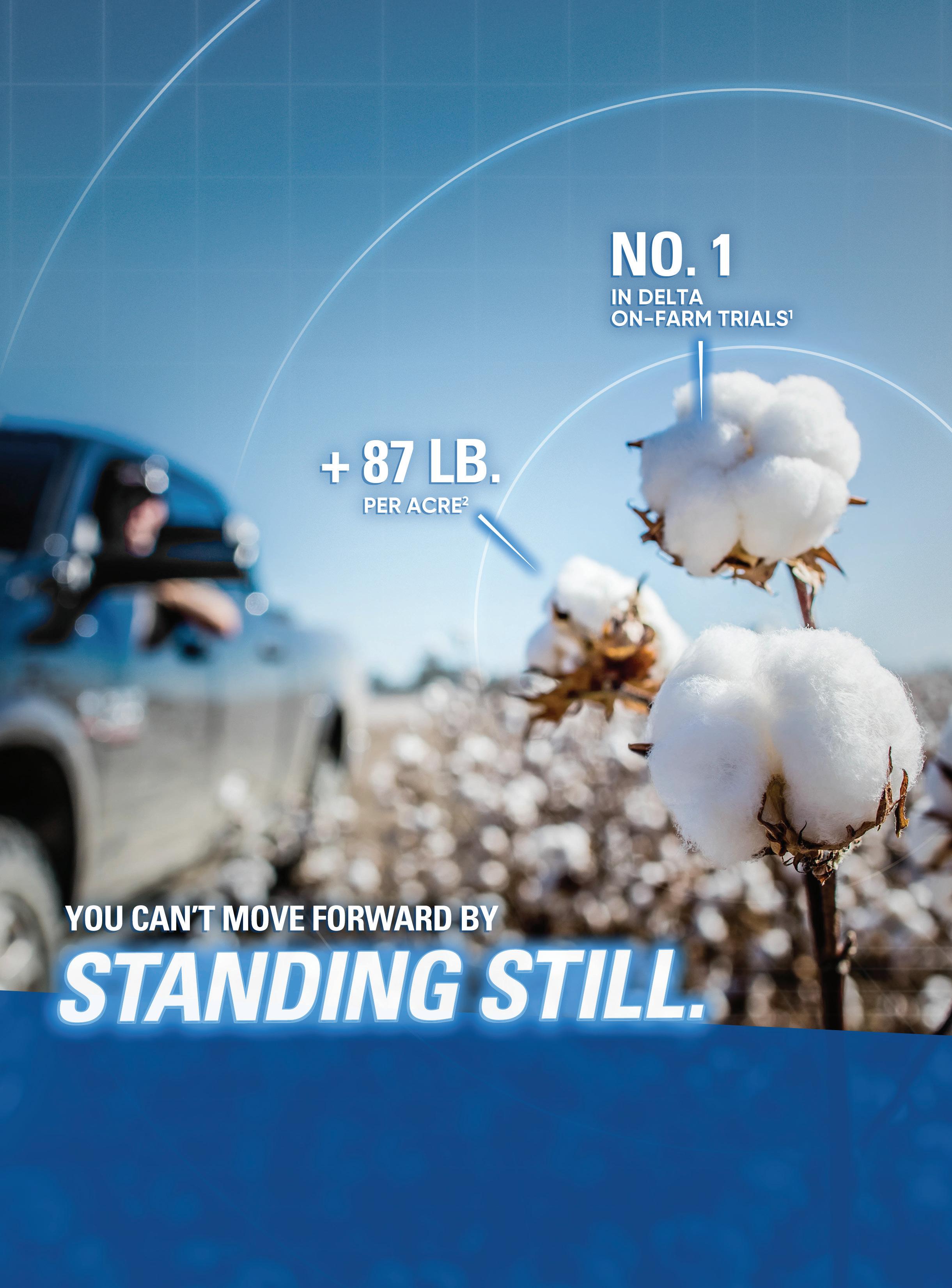


The best way to thrive this season is to be ready for the ones that follow. And with proven data and results of PhytoGen® cottonseed, you can be confident your operation is ready to thrive for seasons to come. Learn more at PhytoGen.com. ¹2020 Mississippi State University (MSU) On-Farm Cotton Demonstration Trials. 2PhytoGen® brand PHY 411 W3FE outyielded the best Deltapine variety by 87 lb./A in the MSU Official Variety Trials. ™® Trademarks of Corteva Agriscience and its affiliated companies. The Enlist® weed control system is owned and developed by Corteva Agriscience LLC. © 2022 Corteva. (09/22) BR CAAG2PHYG070
6 CONSULTANTS CONFERENCE
e Cotton Consultants Conference will be held during the 2023 Beltwide. e session is open to all registered attendees.

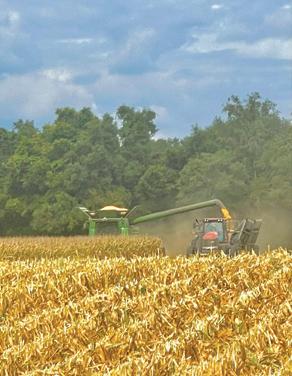
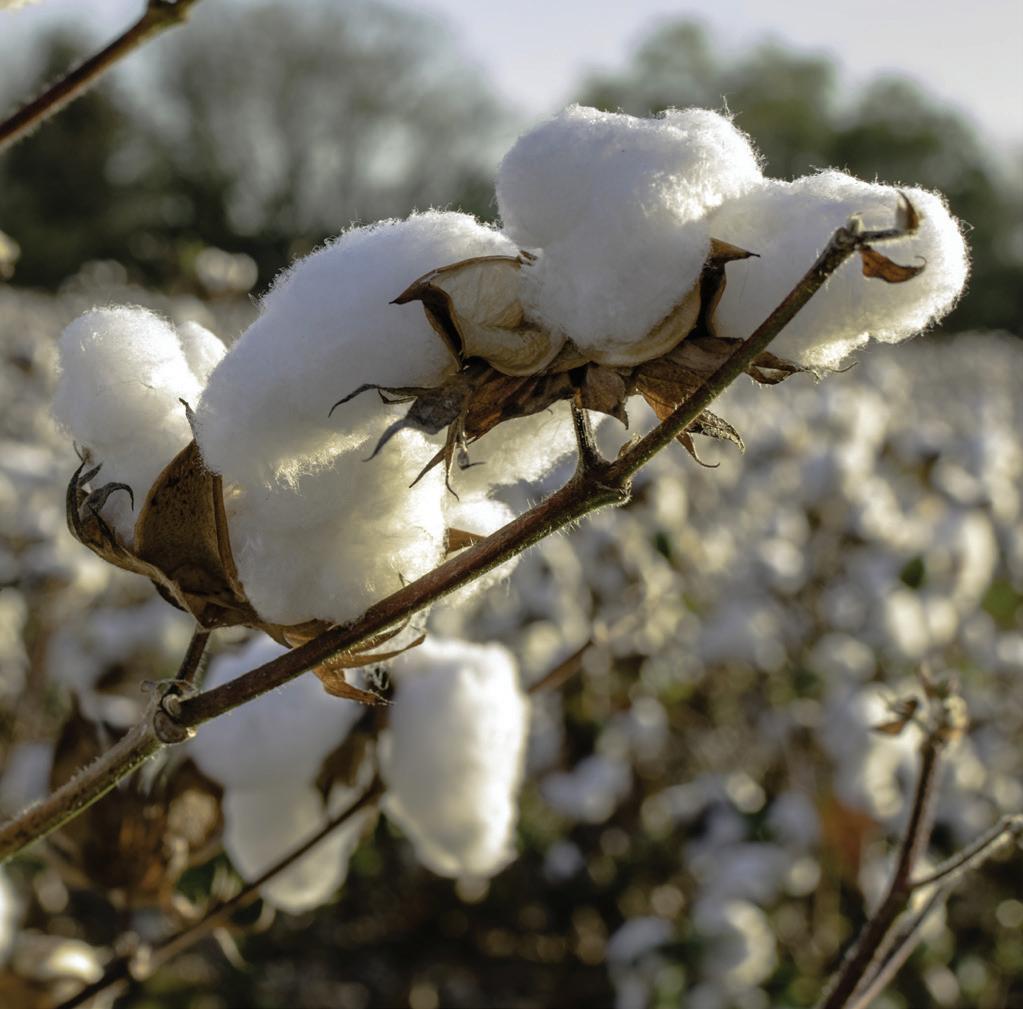
20 END-OF-SEASON THOUGHTS
State
specialists report on diverse — and some

as they walk their respective
at the end of the season.
GINNERS MARKETPLACE



the
e mystique
of
rst bale of the
imagination of all who are tied to the

TWITTER: @COTTONFARMING NOVEMBER 2022 COTTON FARMING 3 DIGITAL OFFERINGS Keep up with the latest from Cotton Farming by signing up for the monthly E-News at www.cottonfarming.com . Facebook: https://www.facebook.com/cottonfarming Twitter: @CottonFarming Instagram: @CottonFarmingMagazine COTTON FARMING (ISSN 0746-8385) is published monthly January through December by One Grower Publishing LLC, 875 W. Poplar Ave., Suite 23, Box 305, Collierville, TN 38017. Periodicals postage paid at Memphis, Tennessee, and at additional mailing o ices. POSTMASTER: Send address changes to Omeda Communications, Customer Service Department, P.O. Box 1388, Northbrook, IL 60065-1388 (Phone: 847-559-7578) (Fax: 847-564-9453). Annual subscriptions are $40. International rates are $55 in Canada/Mexico, $90 in all other countries for air-speeded delivery. Surface delivery not available due to problems in reliability. ON THE COVER: A beautiful field of snowy white cotton begins with the seed. Cover photo by Jacqueline Nix/Dreamstime.com. Vol. 66 No. 11 The menu of cotton varieties from which to choose in 2023 includes a host of high-yielding, good quality selections. Check out the roster in Cotton Farming’s 2023 Seed Variety Guide. Before placing your order, be sure to do your homework. Discuss priorities with your consultant and seed representative to match your operation’s needs with outstanding cotton characteristics and traits. 8 2023 Variety Options 4 Editor’s Note 14 Cotton’s Agenda 16 Mid-South Report 18 Industry News 20 Specialists Speaking 26 My Turn FEATURES
cotton
surprising — observations
cotton elds
24
official publication
the ginning industry
of harvesting the
season continues to capture the
cotton industry. WEB EXCLUSIVE Very dry conditions, like those seen in most of Arkansas this fall, impact two aspects of soil sampling that make it hard to measure how much phosphorus and potassium are in a field. Go to www.cottonfarming.com for this Web Exclusive report. NOVEMBER 2022PROFITABLE PRODUCTION STRATEGIES www.cottonfarming.com DEPARTMENTS & COLUMNS 2023 Hybrid Guide November 2022 Supplement to Cotton Farming Magazines Southern Production & Marketing Strategies Look for Corn South following page 14 in the Mid-South and Southeast editions of Cotton Farming To have industry news and content delivered directly to your inbox, sign up for the monthly e-newsletter at www.cornsouth.com SUPPLEMENT VARIETY SEED 2023 GUIDE
Editor’s Note
EDITORIAL/PRODUCTION
Editor-In-Chief
Carroll Smith csmith@onegrower.com
Southeast Editor
Amanda Huber ahuber@onegrower.com
Associate Editor
Cassidy Nemec cnemec@onegrower.com
Observations, Options And Opportunities
Spending the early morning hours out on a cotton farm or in university or industry test plots is a time for reflection, for watching. By definition, observation is the process of observing something carefully to gain information.
Observing different cotton varieties continues throughout the day — even throughout the season — and opinions are formed. Even professional baseball’s Yogi Berra said, “You can learn a lot by just watching.” And artist Colin Poole said, “There are no secrets, no formulas. It’s just a matter of looking carefully.”
Once the cotton varieties have been evaluated in these various scenarios, the best performers are chosen for commercial release. It’s always a process, but in the end, farmers reap the benefits of having a plethora of options from which to choose — conventional varieties; traited varieties; early, mid- and late-maturing varieties and so on. The choices are extensive.
Check out Cotton Farming’s Seed Variety Guide on page 8 to see some of the headliners submitted by the cottonseed companies for 2023.
The next piece of the cotton production puzzle is opportunity — a particular group of circumstances that makes it possible to do something. Opportunity can be a little trickier than observation and options because it often involves the uncontrollable whims of Mother Nature.
On page 20, state cotton specialists discuss opportunities — lost and found — that shaped the 2022 crop. Tennessee’s Tyson Raper said, “Early May initially introduced herself as one of the best planting windows we’d seen in the past five, if not 10, years. Unfortunately, many saw that window crash closed with excessive rainfalls.... Perspective is important; we are fortunate and grateful to be where we are relative to where we thought we might be at the end of July.”
Florida’s David Wright noted the potential timeline for this year’s harvest and suggested farmers take advantage of the post-harvest opportunity to plant cover crops and pull soil samples. “Most cotton will harvest in October and will be finished in November from late-planted fields,” he said. “It is time to plant cover crops and winter crops and pull soil samples for nematodes and nutrient testing. The economic climate changes for crops every year — with fertilizer prices being the big story for 2022.”
As you make your cotton growing plans for next season, aim for ones that will fit the potential circumstances you would like to see happen. But also keep Plan B in your back pocket for any surprises that may show up along the way. Happy Thanksgiving to you and yours!
Digital Content Editor
Katie Guthrie
Art Director
Ashley Kumpe
ADMINISTRATION
Publisher/Vice President LiaGuthrie (901) 497-3689 lguthrie@onegrower.com
Associate Publisher/Editor-In-Chief CarrollSmith (901) 326-4443

Associate Publisher/Sales Scott Emerson (386) 462-1532 semerson@onegrower.com
Production Manager David Boyd dboyd@onegrower.com
Audience Services Kate Thomas (847) 559-7514
For subscription changes or change of address, call (847) 559-7578 or email cottonfarming@omeda.com
EDITORIAL ADVISORY BOARD
David Burns – North Carolina
David Lynch – South Carolina
Bob McLendon – Georgia
Larkin Martin – Alabama
Mike Sturdivant Jr. – Mississippi Charles Parker – Missouri
Jimmy Hargett – Tennessee
Allen Helms – Arkansas
Jay Hardwick – Louisiana
Ronnie Hopper – Texas
Ron Rayner – Arizona
John Pucheu – California
If you have comments, please send them to: Cotton Farming Magazine, 7201 Eastern Ave., Germantown, TN 38138.
ACKNOWLEDGEMENT
COTTON
representatives
serve on COTTON FARMING’s

board.
are not necessarily those of the cooperating organizations or the editors. All statements, including product claims, are those of the person or organization making the statement or claim. The publisher does not adopt any
and
statement or claims as its own
statement or claim does not necessarily reflect the opinion of the publisher.
Copyright
ASSOCIATED
4 COTTON FARMING NOVEMBER 2022 COTTONFARMING.COM
Carroll Smith
Carroll
OF COOPERATION: Cooperating with
FARMING are various cotton producer organizations across the Cotton Belt. Many
of producer organizations
editorial advisory
Opinions expressed
conclusions reached by contributors
such
and any such
2022 ©
PUBLICATIONS – One Grower Publishing, LLC also publishes RICE FARMING, THE PEANUT GROWER, SOYBEAN SOUTH and CORN SOUTH One Grower Publishing, LLC 875 W. Poplar Ave., Suite 23, Box 305 Collierville, TN 38017 ONE GROWER PUBLISHING, LLC Mike Lamensdorf PRESIDENT/TREASURER Lia Guthrie PUBLISHER/VICE PRESIDENT
OWN THE EARLY
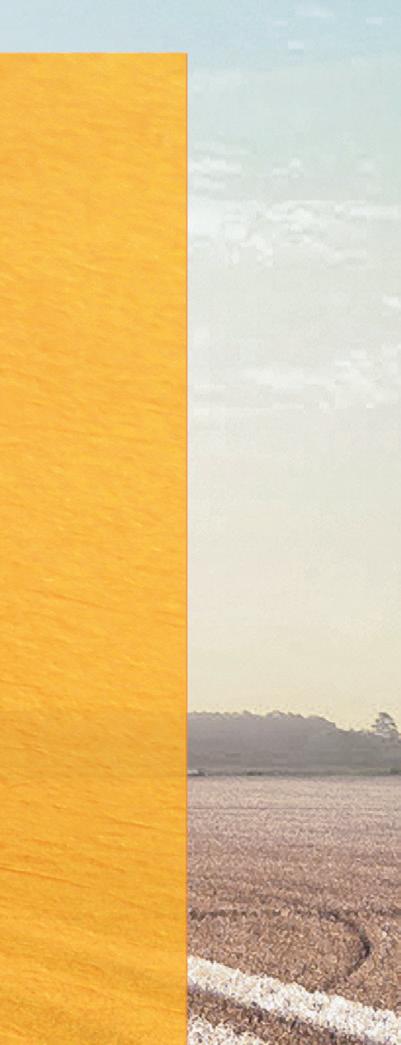

THE ALARM CLOCK THAT AWAKES YOU WILL NEVER NEED A SNOOZE BUTTON.
It doesn’t buzz. Or allow you to snooze. It is not made of plastic and electronics. The internal clock that gets you up before the dawn is made of heart. And determination. Because you know. Early is the key to success in the cotton field. And Stoneville cotton knows, too. Stoneville cotton gets out of the ground earlier and establishes a healthy stand quicker. It also offers multiple choices in herbicide and insect trait options. So it’s less vulnerable to weeds, weather and insects during its most vulnerable time. And that paves the way for a bigger finish.
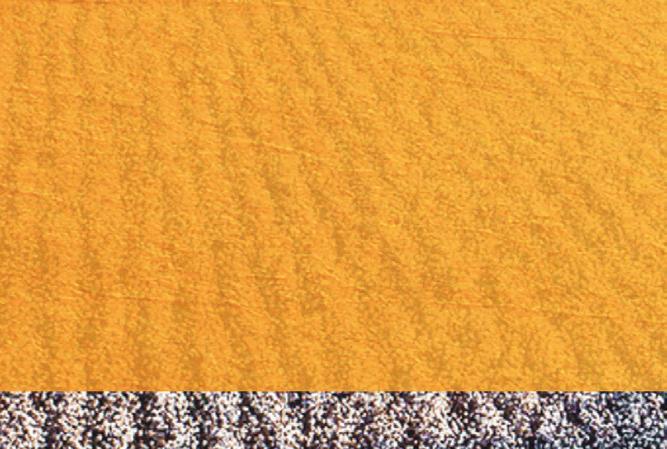
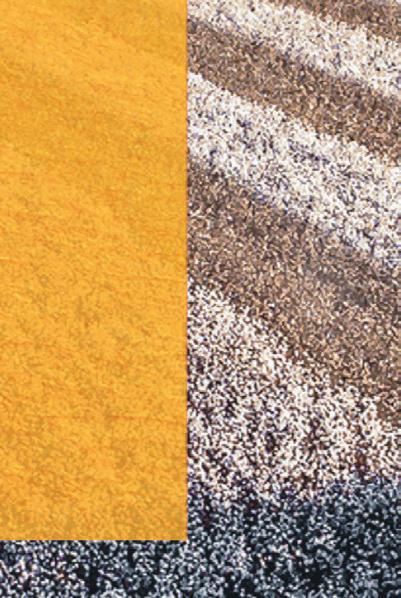
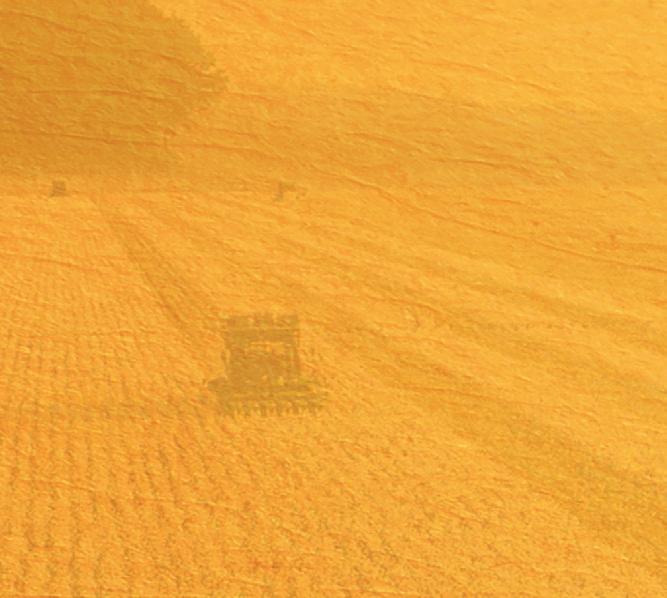

Always read and follow label directions. Stoneville is a registered trademark of BASF. ©2022 BASF Corporation. All rights reserved.
TO FARMERS
Bayer is a member of Excellence Through Stewardship® (ETS). Bayer products are commercialized in accordance with ETS Product Launch Stewardship Guidance, and in compliance with Bayer’s Policy for Commercialization of Biotechnology-Derived Plant Products in Commodity Crops. Commercialized products have been approved for import into key export markets with functioning regulatory systems. Any crop or material produced from this product can only be exported to, or used, processed or sold in countries where all necessary regulatory approvals have been granted. It is a violation of national and international law to move material containing biotech traits across boundaries into nations where import is not permitted. Growers should talk to their grain handler or product purchaser to confirm their buying position for this product.
ALWAYS READ AND FOLLOW PESTICIDE LABEL DIRECTIONS. It is a violation of federal and state law to use any pesticide product other than in accordance with its labeling. NOT ALL formulations of dicamba, glyphosate or glufosinate are approved for in-crop use with XtendFlex® Cotton. ONLY USE FORMULATIONS THAT ARE SPECIFICALLY LABELED FOR SUCH USES AND APPROVED FOR SUCH USE IN THE STATE OF APPLICATION. Contact the U.S. EPA and your state pesticide regulatory agency with any questions about the approval status of dicamba herbicide products for in-crop use with XtendFlex® Cotton. B.t. products may not yet be registered in all states. Check with your representative for the registration status in your state. Products with XtendFlex® Technology contains genes that confer tolerance to glyphosate, glufosinate and dicamba. Glyphosate will kill crops that are not tolerant to glyphosate. Glufosinate will kill crops that are not tolerant to glufosinate. Dicamba will kill crops that are not tolerant to dicamba. Contact your seed brand dealer or refer to the Bayer Technology Use Guide for recommended weed control programs. Insect control technology provided by Vip3A is utilized under license from Syngenta Crop Protection AG. Bollgard®, Respect the Refuge and Cotton Design®, Roundup Ready Flex® and XtendFlex® are registered trademarks of Bayer Group. LibertyLink® and the Water Droplet Design® are registered trademarks of BASF. Agrisure Viptera® is a registered trademark of Syngenta Group Company. Excellence Through Stewardship® is a registered trademark of Excellence Through Stewardship. All other products, company names and trademarks are the property of their respective owners.
2023 Beltwide Cotton Consultants Conference
Helping Consultants And Others With Agronomic And Pest Management Decisions
BY CASSIDY NEMEC ASSOCIATE EDITOR
This year’s Beltwide Cotton Conferences will be held in New Orleans, Louisiana, Jan. 10-12 at the New Orleans Marriott. The Cotton Consultants session will be held during the afternoon Jan. 10 and continue the morning of Jan. 11. The session is open to all registered attendees.

Highlights
This year’s Consultants Conference is bringing in university and U.S. Department of Agriculture researchers, regulatory agencies, Extension personnel/ agents, consultants and industry sales/ support personnel to provide information regarding new products and production/ processing systems. This information can be tailored to fit individual farming operations. Topics this year may include:
Updates on ThryvOn™ cotton technology.
Herbicide resistance.
U.S. Cotton Trust Protocol.
Changes in weather patterns.
Regulatory updates.
Impacts from the Endangered Species Act.
New precision agriculture technologies.
Impacts of climate.
Retail inventory.
Before opening a bag of seed, be sure to read, understand and accept the stewardship requirements, including applicable refuge requirements for insect resistance management, for the biotechnology traits expressed in the seed as set forth in the Technology Stewardship Agreement that you sign. By opening and using a bag of seed, you are reaffirming your obliga tion to comply with the most recent stewardship requirements.
Supply chain status of fertilizer and chemistries.
Dicamba usage.
Regulatory Updates

Dr. Don Parker, VP of Technical Services for the National Cotton Council, said there will be a host of regulatory updates provided during this year’s consultants conference.
He said they will cover FIFRA registration requirements for pesticide registration, as well as ESA requirements for protection of endangered species. Two speakers from Washington D.C. will be in atten-
dance and will give presentations regarding some of these regulatory updates. “A lot of our challenges are in that arena right now,” Parker said.
“We will highlight some of the products under review and the current thoughts of the day on how we’re moving forward with product registration.”
Parker said the new ideas being explored with respect to product registration will change labels. “It’s probably going to add some new requirements on paperwork.”
Attending The Conference
The 2023 Beltwide Cotton Conference is put together by the National Cotton Council and can be attended by anyone in the industry.
Registration costs for the 2023 BWCC before Dec. 14 are: $200 for NCC/Cotton Foundation members, university and USDA researchers, Extension personnel and associations; $500 for non-U.S. research, Extension, associations and consultants; $400 for non-NCC/Foundation members; and $80 for producers, independent crop consultants and students.
For more information and to register, please visit the BWCC home page at www.cotton.org/beltwide/ and click on the registration tab.
6 COTTON FARMING NOVEMBER 2022 COTTONFARMING.COM
TRAIT STEWARDSHIP RESPONSIBILITIES NOTICE





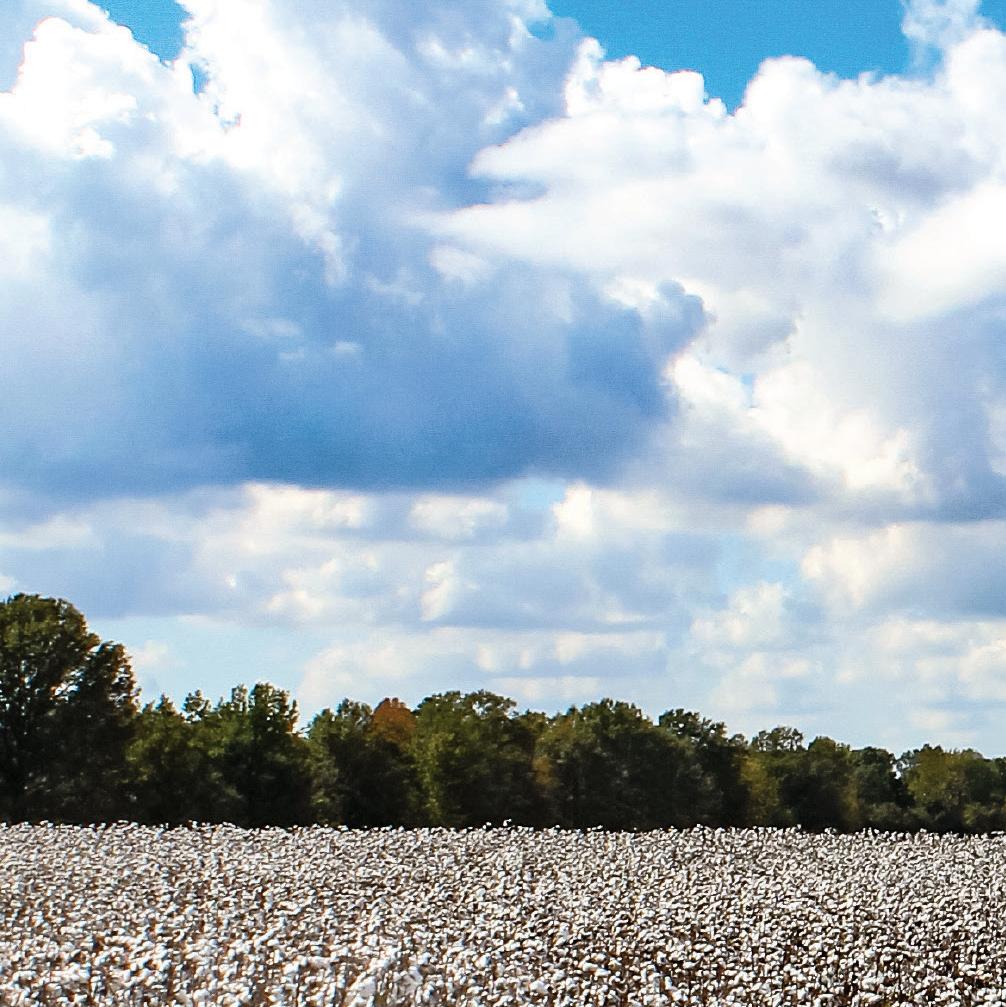
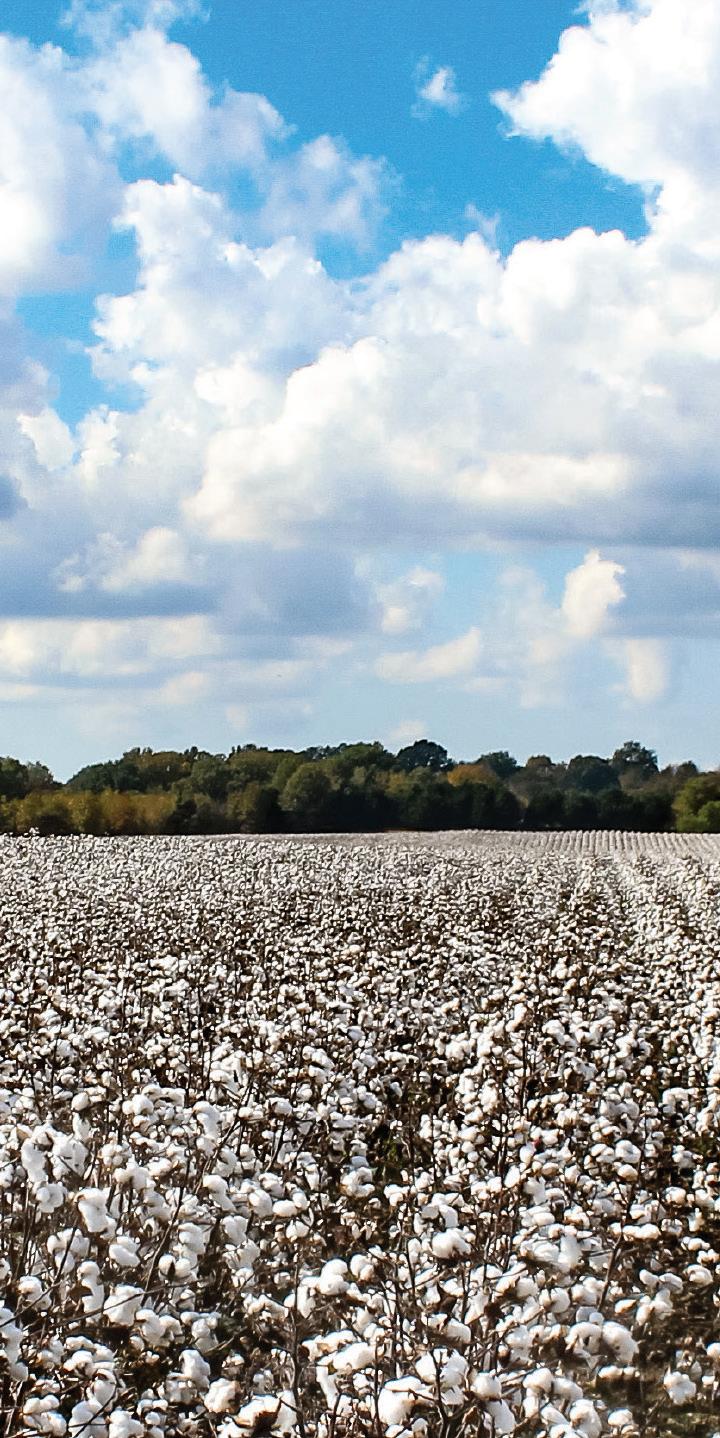
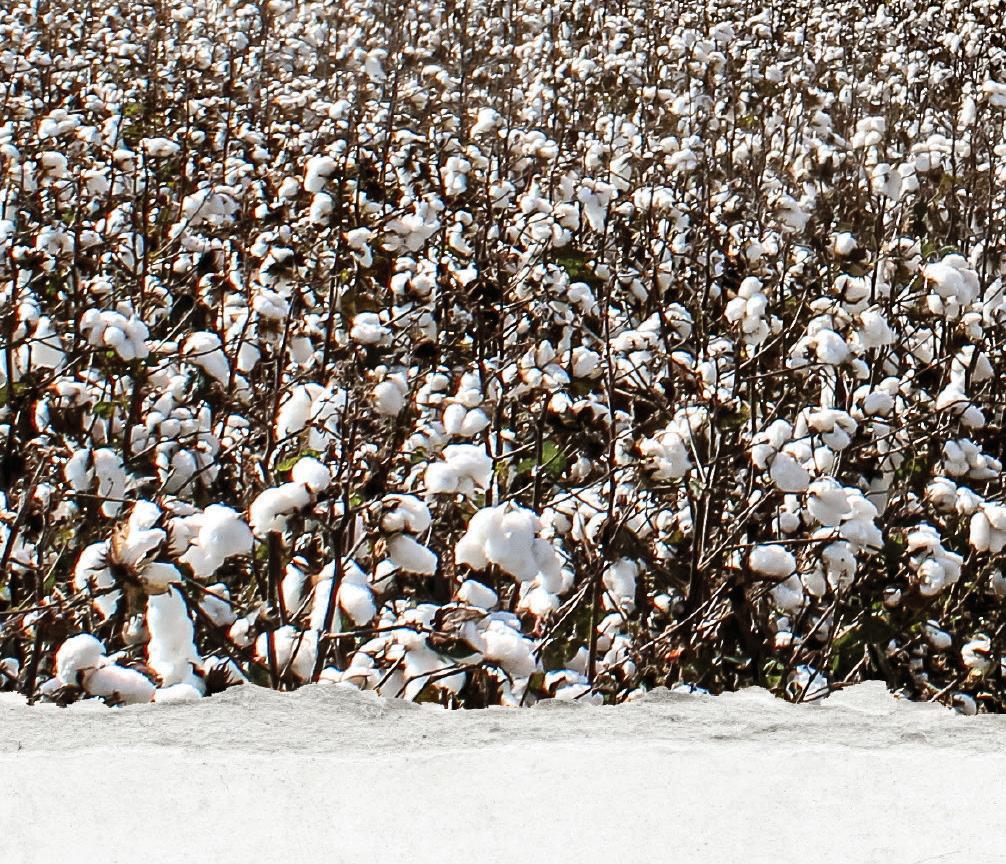
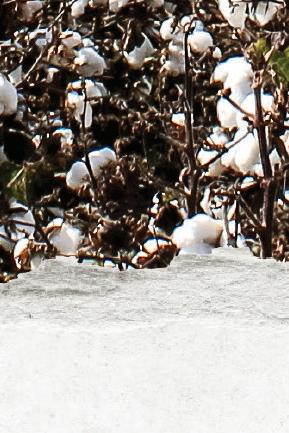













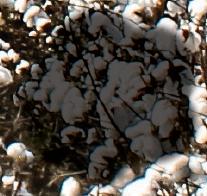

























































































































Yield, Quality And Traits
The menu of cotton varieties from which to choose in 2023 includes a host of high-yielding, good quality selections.

help you
Bollgard 3 XtendFlex
NG 3195 B3XF early-mid4.3-4.5
NG 3299 B3XFearly-mid4.6-4.7
36-37
across
by Cotton Farming magazine. Discuss priorities with your consultant and seed representative to match your operation’s needs with these outstanding characteristics and traits. And then place your order for the upcoming 2023 season with confidence.
30-31Early-mid variety offering good heat tolerance and consistent performance. High yield potential and high turnout.
36-37 32-33New for 2022! Impressive storm tolerant variety with high turnout and easy management. It is sure to be a great fit anywhere early-medium maturing varieties are preferred.
NG 3930 B3XFearly-mid4.1-4.5 semi-smooth37-38
NG 4098 B3XFmid 4.3-4.5 semi-smooth38-39
29-30Widely adapted early-med maturing variety with a great disease package and excels on most soil types in dryland or limited water scenarios.
both
New varieties for 2023 in blue

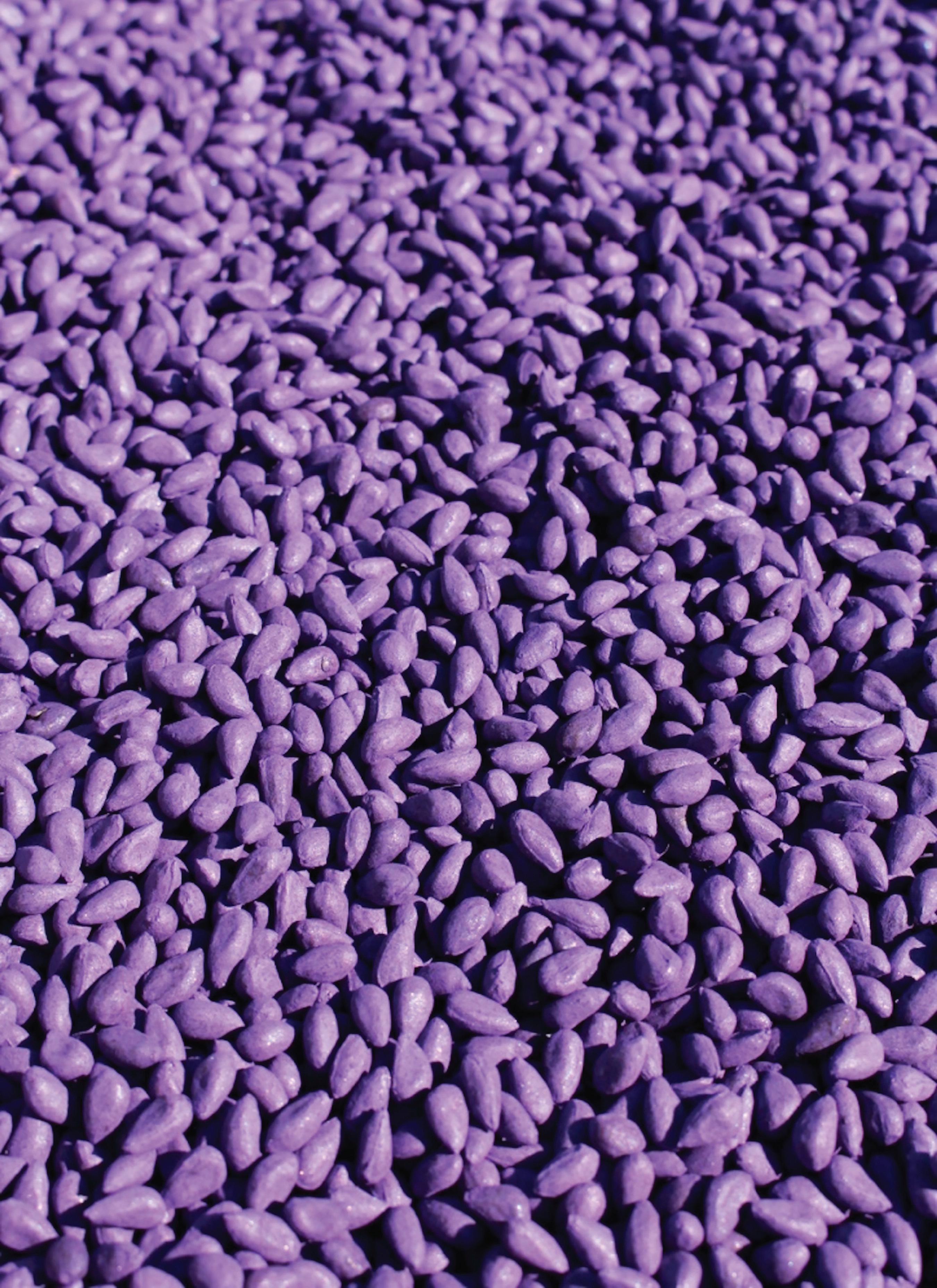
Variety MaturityMicronaireLeaf TypeStaple LengthG/TexComments
To
get started, seed companies from
the Cotton Belt provided information about their headliners on pages 8-13 in the annual Seed Variety Guide published
NEXGEN
Cotton
smooth
smooth
33-35Outstanding staple and overall fiber quality! Widely adapted and very easily managed. Excellent heat tolerance and very good disease package to protect yield potential. NG 4190 B3XF mid 4.3-4.5 smooth 37-38 29-30Excellent yield potential and fiber quality on
dryland and irrigated acres. This variety is sure to have a fit in multiple regions across the Belt! NG 4936 B3XFmid 4.1-4.5 smooth 37-39 29-31Top-end yield potential with an excellent fiber package. Performs very well anywhere a medium-maturity variety is prefered across the Cotton Belt. NG 5150 B3XF mid-full4.3-4.5 smooth 37-38 29-30With excellent heat tolerance, this variety is broadly adapted and will perform well where medium to full maturing varieties are preferred. NG 5711 B3XF mid-full4.1-4.5 smooth 37-39 30-32High yield and outstanding fiber quality variety with best-in-class disease package. Wide adaptability and easy to manage for a growthy plant. Bollgard II XtendFlex Cotton NG 3406 B2XFearly-mid4.4-4.6 semi-smooth36-37 29-31Excellent yield and fiber quality. Extremely widely adapted. NG 3729 B2XF early-mid4.4-4.6 semi-smooth37-38 30-32Top-end yield potential for the early-med maturity class broadly adapted across multiple soil types and environments. NG 4545 B2XFmid 4.0-4.7 smooth 36-37 32-33Excellent variety for all scenarios across Texas South Plains and OK. Excellent vigor and disease tolerance to Verticillium wilt and bacterial blight. NG 5007 B2XFmid-full4.3-4.6 smooth 36-38 28-30Excellent yield potential and fiber quality. Outstanding, consistent performer across the Belt! XtendFlex Cotton NG 3500 XF early-mid3.7-4.6 smooth 36-37 31-32Widely adapted to the Plains of Texas and Southwest Oklahoma. Proven disease tolerance, yield and quality are reasons growers choose this variety year after year. NG 4792 XF mid 3.7-4.6 smooth 36-37 32-33Widely adapted to South and Rolling Plains of Texas in an indeterminate growing variety. Outstanding disease package. Americot Conventional Cotton AM UA48 early 4.5-4.9 smooth 37-39 36-38University of Arkansas variety. Exceptional fiber quality with yield potential to match, in a conventional variety. VARIETY SEED 2023 GUIDE 8 COTTON FARMING NOVEMBER 2022 COTTONFARMING.COM
DP
DP
DP
DP
XtendFlex
DryTough
top Deltapine
the West
and
showing
performance
the
high
in an early- to mid-maturity with good indeterminacy.
B3XFmid-full4.7 semi-smooth38.0 32.8Bollgard 3 XtendFlex cotton variety showing resistance to both reniform and rootknot nematodes with outstanding yield potential.
DP 2143NR B3XFmid-full4.4 semi-smooth36.6 30.4Bollgard 3 XtendFlex cotton variety for the Southwest that has shown resistance to reniform and root-knot nematodes and moderate tolerance to Verticillium wilt.
DP 2012 B3XF early 4.3 smooth 38.3 30.6Yield potential and fiber quality similar to DP 1646 B2XF in an early maturity with bacterial blight resistance.
DP 2020 B3XF early-mid4.3 semi-smooth38.8 30.9Broadly adapted offering high yield potential, excellent fiber length with bacterial blight resistance.
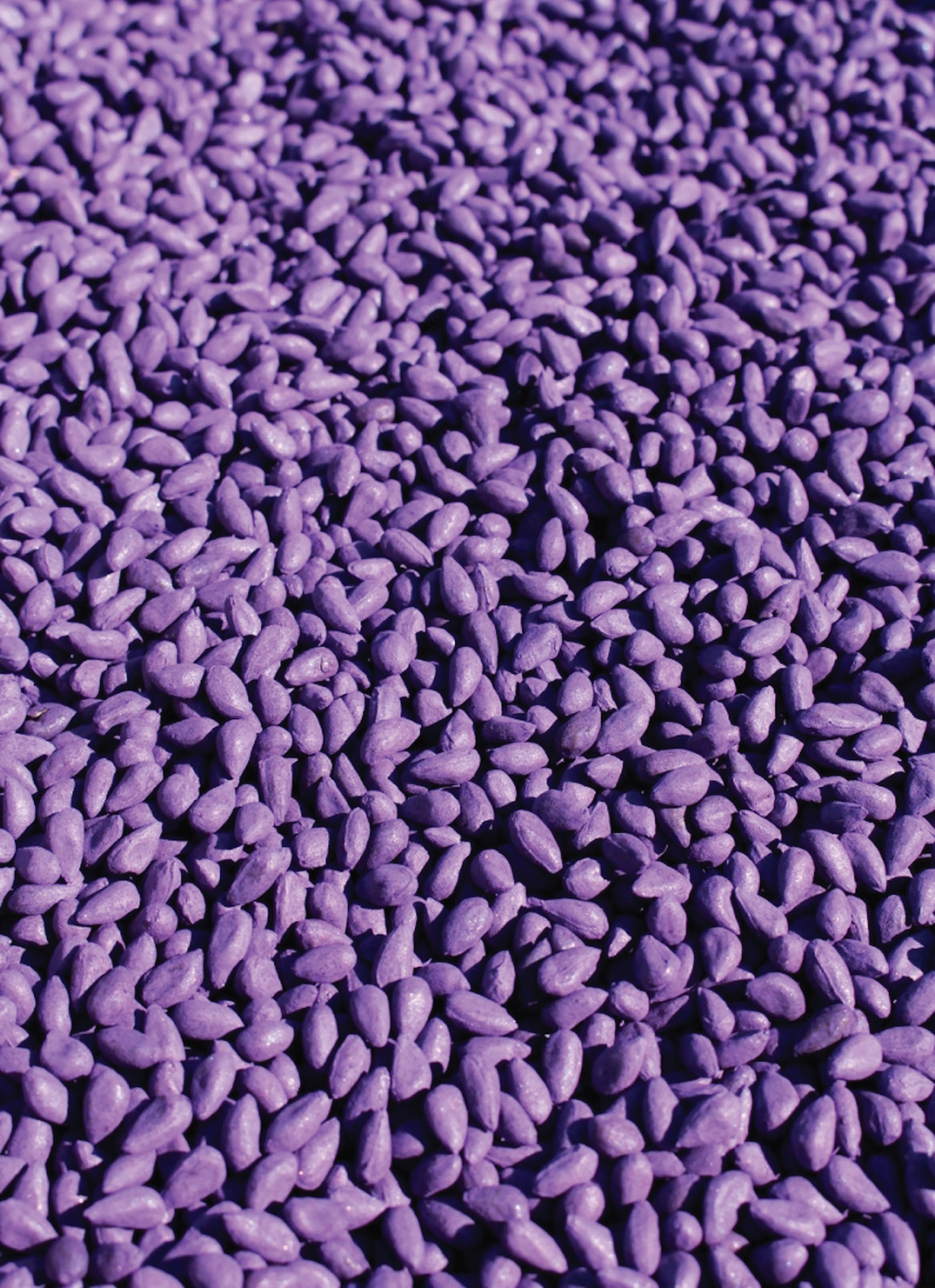
DP 2022 B3XF early-mid4.3 semi-smooth37.7 30.3Bred for the Northern High Plains with good seedling vigor and bacterial blight resistance.
DP 2038 B3XF mid 4.5 smooth 36.2 29.8Extremely high yield potential, good fiber quality with bacterial blight resistance and broadly adapted.
DP 2044 B3XF mid-full 3.6 semi-smooth38.8 32.5 Bred for the dryland fields in West Texas offering excellent seedling vigor and bacterial blight resistance.
DP 2055 B3XF full 4.5 smooth 39.5 30.7 Adapted for full-season markets across the Cotton Belt with high yield potential and excellent fiber quality potential.
DP 1908 B3XF early 3.9 smooth 38.4 31.6 Excellent fiber length and strength, strong emergence with resistance to bacterial blight for the Texas Panhandle.
DP 1948 B3XF mid-full4.2 semi-smooth39.0 31.2 Yield potential similar to DP 1646 B2XF with an excellent fiber quality and staple length adapted to the South Texas and Southern Rolling Plains regions.
DP 1820 B3XF early-mid4.0-4.5 semi-smooth39.0 30.6-32.7Excellent fiber length, micronaire and strength, plus resistance to bacterial blight. Works well in West Texas, Upper Mid-South and Southeast.
DP 1840 B3XF
New varieties for 2023 in blue DELTAPINE BRAND Bollgard 3 ThryvOn™ with XtendFlex Technology Cotton* DP 2211 B3TXF early 4.4 smooth 37.8 28.8Bollgard 3 ThryvOn with XtendFlex Technology cotton variety with strong yield potential in early-maturing genetics. DP 2131 B3TXF early-mid4.4 smooth 38.0 29.8Bollgard 3 ThryvOn with XtendFlex Technology cotton variety with outstanding yield and fiber quality potential. Bollgard 3 XtendFlex Cotton
2239 B3XF mid 4.4 smooth 38.4 30.0Bollgard 3
cotton variety with high yield potential strong fiber quality potential.
2115 B3XF early 4.6 semi-smooth37.5 30.6Outstanding yield potential in short-season growing environments. DP 2123 B3XF early-mid4.4 semi-smooth36.2 30.4A
dryland cotton variety for
Texas market showing strong seedling vigor and ability to perform under heat
drought stressed growing conditions and strong seedling vigor.
2127 B3XF early-mid4.7 smooth 36.8 30.4A
brand recommended variety
solid
across
Cotton Belt with
yield potential
2141NR
mid-full4.4 smooth 39.0-39.2 30.7 Comparable to DP 1538 B2XF, with potential fiber quality advantage over DP 1725 B2XF and bacterial blight resistance. Works well in the Southeast and Carolinas. DP 1845 B3XF mid-full3.8-4.2 semi-smooth39.5-40.4 30.1-32.4Yield potential similar to DP 1646 B2XF (in Texas) and fiber length similar to DP 1646 B2XF. Works well in Texas and the lower Mid-South. DP 1851 B3XF full 4.6 smooth 38.4 31.8 Excellent combination of yield and fiber quality potential. Best fit in the lower MidSouth, Carolinas and Southeast. Bollgard II XtendFlex Cotton DP 1646 B2XF mid-full4.1-4.5 smooth 37.7-39.4 29.2-31.1Mid-full maturity variety with a broad fit across a range of environments, excellent yield potential and fiber quality. XtendFlex Cotton DP 1909 XF early 4.0 smooth 38.2 31.3 Good emergence, excellent fiber package, open-boll type plant with resistance to bacterial blight for the Texas Panhandle. DP 1822 XF early-mid4.3 semi-smooth38.0 30.4Good tough-acre performance potential with very good fiber length and strength and resistance to bacterial blight. Works well in East Texas. Variety data is based on Beltwide testing. Ratings are based on 2016 to 2021 Deltapine brand research. Pending regulatory approvals, ThryvOn™ Technology will be the industry’s first biotech trait to provide protection against tarnished plant bugs and thrips species. *ThryvOn™ Technology has received full approval for planting in the United States but, as of the date this material was published, is pending approval in certain export markets. Specific plans for commercialization depend upon regulatory approvals and other factors. ThryvOn™ Technology may help reduce insecticide applications for tarnished plant bugs and thrips species (tobacco thrips [Frankliniella fusca]; Western flower thrips [Frankliniella occidentalis]; tarnished plant bug [Lygus lineolaris]; and Western tarnished plant bug [Lygus Hesperus]). Scouting is critical to determine which and how many insecticide applications are recommended to avoid economic losses greater than the pest management costs (i.e., when economic thresholds are met). Variety MaturityMicronaireLeaf TypeStaple LengthG/TexComments TWITTER: @COTTONFARMING NOVEMBER 2022 COTTON FARMING 9
PHY
PHY
PHY
PHY
PHY
W3FEearly-mid4.6
W3FE
W3FEearly-mid4.4
PHY
W3FEmid
the Enlist cotton trait and WideStrike
Insect
micronaire.
RKN
to mid-maturity
REN
superb
Early to mid-maturing variety featuring the Enlist cotton trait and WideStrike 3 Insect Protection
Superior
with excellent fiber
lower micronaire.
Root-knot nematode resistance. Broad adaptation across the Cotton Belt.
High-yielding W3FE variety with PhytoGen Breeding Traits for RKN resistance and bacterial blight resistance.
High-yielding and mid-maturing variety adapted to the South Delta featuring the Enlist cotton trait and WideStrike 3 Insect Protection with bacterial blight and RKN resistance. Excellent seedling vigor.
Mid-maturing, medium height, semi-smooth leaf variety with PhytoGen Breeding Traits for bacterial blight and RKN resistance. This top-yielder fits and performs well on both irrigated and nonirrigated land and responds very well to plant growth regulators. Very manageable and responds well to higher inputs and productive soils. Excellent seedling vigor.
PHY 411 W3FE mid 4.7 semi-smooth36 32.3Very broadly adapted, high-yielding variety throughout the Upland-growing regions. Includes resistance to bacterial blight, root-knot nematodes and reniform nematodes. Features Enlist cotton trait and WideStrike 3 Insect Protection
PHY 443 W3FEmid 4.5 semi-smooth37 33.7
High-yielding, mid-maturing variety featuring the Enlist cotton trait and WideStrike 3 Insect Protection. PhytoGen Breeding Traits for resistance to bacterial blight and both reniform and RKN nematodes.
PHY 480 W3FEmid 4.1 semi-smooth37 32.4Industry-leading RKN resistance in mid-maturing W3FE variety with very good fiber quality and yield stability.

PHY 500 W3FEmid-full4.5
PHY 545 W3FEfull
One of the most consistent varieties available. Broad adaptation, fits across a wide range of soil types from the Mid-Atlantic to the Southeast and across the Cotton Belt. Top-yielder with excellent fiber characteristics, including micronaire, strength and staple. PhytoGen Breeding Traits include bacterial blight and RKN resistance.
Aggressive growing full-season variety adapted to the lower Southeast. Features the Enlist cotton trait and WideStrike 3 Insect
Variety MaturityMicronaireLeaf TypeStaple LengthG/TexComments New varieties for 2023 in blue PHYTOGEN Upland
332 W3FEearly-mid4.3 semi-smooth39 32.7 High-yielding, broadly adapted variety featuring
3
Protection . Early
with
fiber quality, including lower
BB,
and
resistant.
340 W3FEearly-mid4.2 light-hairy37 31.5
.
yields
quality,
350
semi-smooth37 31.9
360
early-mid4.5 semi-smooth37 30.1
390
semi-smooth38 32.1
400
4.3 semi-smooth37 31.5
smooth 37 31.7
4.8 semi-smooth35 31.3
Protection . PhytoGen Breeding Traits include bacterial blight and RKN resistance. PHY 580 W3FEfull 4.5 semi-smooth36 31.7 Superior yield potential with excellent fiber quality. Full-season variety featuring the Enlist cotton trait and WideStrike 3 Insect Protection. PhytoGen Breeding Traits include bacterial blight and RKN resistance. Adapted to Mid-South and Southeast. Southwest Plains Upland PHY 205 W3FEvery early4.4 semi-smooth35.2 30.1 Very early, short-statured plant broadly adapted across north and south of Lubbock. Responds well under moderate-to-good water. Loaded with yield protection traits against bacterial blight, RKN, reniform nematodes and Verticillium wilt. Features Enlist cotton trait and WideStrike 3 Insect Protection. PHY 210 W3FEearly 4.2 smooth 36.8 30.6Early maturity. Excellent storm tolerance and excellent Verticillium wilt tolerance. PHY 250 W3FEearly 4.1 smooth 37.1 30.2High-yield potential, early maturing W3FE variety selected for the Northern High Plains for its storm tolerance, earliness and consistency. Stable micronaire. Excellent Verticillium wilt tolerance and smooth leaves. PHY 300 W3FEearly-mid4.1 semi-smooth36.2 29.4Broadly adapted, early to mid-maturing W3FE variety with outstanding yield potential from dryland to good irrigation capacities. Has excellent storm tolerance and semi-smooth leaves. Resistant to bacterial blight; Verticillium wilt tolerance. PHY 332 W3FEearly-mid4.2 semi-smooth37.4 30.5Early mid-maturing, with full yield protection package, offering bacterial blight resistance and both RKN and reniform nematode resistance with high fiber strength and good Verticillium wilt tolerance. PHY 350 W3FEearly-mid4.2 semi-smooth36.8 29.4Early to mid-maturing, RKN-resistant variety with broad adaptation and excellent Verticillium wilt tolerance. PHY 394 W3FEearly-mid3.9 semi-smooth37.8 29.3Excellent seedling vigor and excellent Verticillium wilt tolerance. Resistant to bacterial blight and RKN. Broadly adapted, and responds to moderate to good water. PHY 400 W3FEearly-mid4.1 semi-smooth36.5 30.2Mid-maturing, medium-height, semi-smooth leaf variety with PhytoGen Breeding Traits for bacterial blight and RKN resistance. This top-yielder fits and performs well on irrigated and nonirrigated land. Responds very well to PGRs. Very manageable. Responds well to higher inputs and productive soils. Excellent seedling vigor. 10 COTTON FARMING | NOVEMBER 2022 COTTONFARMING.COM

Variety MaturityMicronaireLeaf TypeStaple LengthG/TexComments New varieties for 2023 in blue PHYTOGEN (continued) PHY 411 W3FE mid 4.4 semi-smooth35.2 30.8Very broadly adapted, high-yielding variety throughout the Upland-growing regions. Includes resistance to bacterial blight, root-knot nematodes and reniform nematodes. Features Enlist cotton trait and WideStrike 3 Insect Protection PHY 443 W3FEmid 4.4 semi-smooth36.2 31.0 Features the Enlist cotton trait and WideStrike 3 Insect Protection. Broadly adapted in dryland to good water. Bacterial blight, RKN and reniform resistant. PHY 480 W3FEmid 4.1 semi-smooth36.8 30.0Industry leading RKN resistance in mid-maturing W3FE variety with very good fiber quality and yield stability. PHY 545 W3FEmid-full4.3 semi-smooth35.5 29.8Broadly adapted in dryland to good water. BB and RKN resistant. Strong W3FE variety that fits well south of Lubbock, Rolling Plains and Oklahoma. Acala PHY 764 WRF mid 4.2 semi-smooth38 36.5Broadly adapted Acala variety with exceptional yield potential and staple length. Featuring WideStrike Insect Protection Pima PHY 807 RF mid 4.5 semi-hairy46 47.8Excellent yielding Pima variety that provides superior quality. Roundup Ready Flex and tolerant to Fusarium Race 4. PHY 881 RF mid 4.5 semi-hairy48 46.2Broadly adapted, medium to full statured. High-yield potential with the ability to yield up to 9% higher than PHY 805 RF. Tolerant to Fusarium Race 4. ARMOR SEED XtendFlex Cotton ARMOR 9442 XFearly-mid4.2-4.5 smooth 38 31 Early-mid maturity non- Bt product for West Texas. Moderate resistance to Verticillium wilt, with premium fiber and stable yield potential. Bollgard II XtendFlex Cotton ARMOR 3475 B2XFearly 4.5-4.8 semi-smooth37-39 29-30Fits short-season environments, dryland and irrigated. Excellent seedling emergence, early season vigor. May require PGRs in short-season environments. Not recommended for high Verticillium wilt acres. Avg. seed size: 4,700 seeds/lb. ARMOR 3885 B2XFfull 4.3-4.5 smooth 36-38 29-30Broadly adaptated to full-season environments. Use aggressive, early PGR management. Best adapted to lighter and mixed soils. Avg. seed size: 5,600 seeds/lb. Bollgard 3 XtendFlex Cotton ARMOR 9371 B3XFearly-mid4.5-4.6 semi-smooth37-38 31-34Broad-acre fit product. Very good emergence and early season vigor. High yield potential across all environments, packaged with excellent fiber. ARMOR 9512 B3XFmid 4.1-4.4 semi-smooth37 31 Mid-maturity variety for West Texas and the Rolling Plains. Medium growth habit that is easy to manage with an above average Verticillium wilt rating and strong seedling vigor. ARMOR 9608 B3XFmid 4.5-4.6 semi-smooth36-38 29-32High yield potential. Fits Southeast, Mid-South, South Texas. Use moderate PGR levels. Best suited to loam, heavier soils. Avg. seed size: 5,400 seeds/lb. ARMOR 9831 B3XFfull 4.5-4.6 semi-smooth37-38 31-32Excellent yield and fiber. Outstanding performance on light to sandy soils. Very good early season emergence and vigor. Responds well to PGRs. Very good defensive package including bacterial blight resistance. SEED SOURCE GENETICS Conventional Cotton SSG UA 107 early 4.5-4.9 smooth 35-39 30-33Tall plant, widely adapted. Disease resistance: bacterial blight, Fusarium wilt. Tolerant to Verticillium wilt and tarnished plant bugs. Good supply in 2022. SSG UA 114 early 4.5-4.9 medium-hairy35-39 30-33Widely adapted. Disease resistance: bacterial blight, Fusarium wilt. Tolerant to Verticillium wilt and tarnished plant bugs. Good supply in 2022. SSG HQ210CT mid-early4.5-4.8 smooth 35-37 28-30Smooth-leaf picker type. SSG UA 222 mid-early4.0-4.5 semi-smooth36-39 29-33Widely adapted, high-yielding picker type. Disease resistance: bacterial blight, Fusarium wilt. Tolerant to Verticillium wilt and tarnished plant bugs. SSG UA 248 early 4.62 slightly hairy36-39 33.2SSG UA 248 yielded 1,095 lbs/A compared to the yield of SSG UA 48 of 997 lbs/A at four sites in Arkansas — a 10% increase. This equals about $55 per acre at a lint price of 55 cents per pound. TWITTER: @COTTONFARMING NOVEMBER 2022 | COTTON FARMING 11
FM 1621GL
FM 1888GL
FM 2202GL
FM 1830GLT
FM 1911GLT
FM 2334GLT mid 4.2
FM 2498GLT mid
FM 1730GLTP early-mid4.1 semi-smooth1.16
FM 1953GLTP early-mid4.3
FM 2398GLTP mid 4.5 semi-smooth1.14
yield potential. Stable performance across the High Plains
yield potential. Stable performance across the High Plains region. Resistant to

of the
blight.
storm
A good fit for High and
High yield potential. Very good Verticillium wilt tolerance. Bacterial blight resistance. Good fiber package. Adapted for Southwest, South Texas and Far West.
Excellent yield potential. Excellent Verticillium wilt tolerance. Outstanding fiber package.
suited for the Southwest, Far West and South
early-season vigor. Very good root-knot nematode tolerance. Very good fiber package with strong yield potential. High gin turnout. Excellent storm tolerance. Resistant to bacterial blight. Very good Verticillium wilt tolerance with twogene worm protection. Well suited for High and Rolling Plains of the Southwest.
yield potential and outstanding fiber quality. Two-gene worm protection. High gin turnout. Excellent Verticillium wilt tolerance. Well suited for the Southwest and Far West.
yield potential. Outstanding early-season vigor. High gin turnout. Resistant to bacterial blight. Two-gene worm protection. Well suited for the Western Cotton Belt. Very good Verticillium wilt tolerance.
Very good root-knot nematode tolerance. Resistant to bacterial blight. Excellent fiber package. High gin turnout. Three-gene lepidopteran resistance, which decreases the likelihood that additional worm control measures will be needed. Well suited for the Southwest, Far West and South Texas. Very good Verticillium wilt tolerance.
high performance in varied environments. Resistant to bacterial blight. Excellent fiber quality package and yield potential. Excellent heat tolerance. Good early-season vigor. Three-gene lepidopteran resistance, which decreases the likelihood that additional worm control measures will be needed. Well suited for South Texas, Rolling Plains of the Southwest and Oklahoma.
Excellent yield potential. Has high gin turnout. Very good Verticillium wilt tolerance. Resistant to bacterial blight. Three-gene lepidopteran resistance, which decreases the likelihood that an application will be
New varieties for 2023 in blue Variety MaturityMicronaireLeaf TypeStaple LengthG/TexComments FIBERMAX FiberMax Cotton
early 4.3 semi-hairy1.13 30.4Outstanding
region. Good storm tolerance. High gin turnout. RKN tolerant. Well suited for High Plains of the Southwest and Far West.
early-mid4.1 semi-smooth1.15 30.6Outstanding
bacterial
Good
tolerance.
Rolling Plains
Southwest.
mid 4.2 semi-smooth1.11 31.5
early-mid4.2 smooth 1.19 31.2
Well
Texas.
early-mid3.9 semi-smooth1.15 29.7Excellent
smooth 1.2 30.4Excellent
4.6 semi-smooth1.15 29.9Excellent
31.9
semi-smooth1.17 30.9Consistently
30
needed to control bollworm. A good fit for the Western Cotton Belt. DYNA-GRO Bollgard II XtendFlex Cotton DG 3385 B2XFearly 4.3-4.7 semi-smooth1.11-1.15 29-31Adapted to Texas, Arizona, Mid-South, Upper Southeast and East Coast. Very good storm tolerance and early season vigor. Very good irrigated or dryland. Best performance on silt loams. Manage early with plant growth regulators. Bollgard 3 XtendFlex Cotton DG 3387 B3XF early-mid4.35 smooth 1.16 30.5Best adapted to West Texas and Oklahoma. Medium-short plant with good fiber quality and seedling vigor. Excellent Verticillium wilt tolerance, bacterial blight resistance and root-knot nematode tolerance. DG 3402 B3XFearly-mid4.25 smooth 1.21 30 Broadly adaptable to Texas and the Southeast. Excellent seedling vigor and fiber quality with bacterial blight resistance. Excellent storm tolerance. DG 3422 B3XF early-mid4.15 smooth 1.17 30.1 Root-knot nematode and reniform nematode tolerance. Broadly adapted to Texas and the Southeast. Above average Verticillium wilt tolerance and Race 4 Fusarium wilt tolerance. Good fiber quality with excellent storm tolerance. DG 3456 B3XFearly-mid4.04 smooth 1.15 27 Broadly adapted across the Cotton Belt. Medium plant height with a solid fiber package. Aggressive PGR management recommended. DG 3469 B3XFearly-mid4.4 smooth 1.16 30.5Best adapted to West Texas and Oklahoma. Medium plant height with good fiber quality and excellent seedling vigor. Provides Verticillium wilt tolerance and bacterial blight resistance. DG 3470 B3XF early-mid4.62 smooth 1.16 30.2B3XF version of DG 2570 B2RF. Broadly adapted across U.S. Southern Cotton Belt. Medium to tall plant height. Very good seedling vigor. DG 3511 B3XF mid 4.77 smooth 1.17 34.7Broadly adapted across the Rolling Plains and Coastal Texas. Excellent performance potential in Mid-South and Southeast with bacterial blight resistance DG 3519 B3XF mid 4.37 1.24 33.6 86.2Medium plant and easy to manage with PGR. Excellent fiber characteristics and yield potential from Texas to the Mid-South and Southeast. Very good storm tolerance with baterial blight resistance and reniform nematode tolerance 12 COTTON FARMING | NOVEMBER 2022 COTTONFARMING.COM
DG
DG
DG H929 B3XFearly 4.3-4.7 semi-smooth1.12-1.14
DG H959 B3XFmid 4.3-4.7
DG P224 B3XFmid-full3.65
bacterial blight resistance. Adapted to Texas, Delta and Southeast
grown in the Delta region. Medium-tall plant type that should be managed
with PGRs. Root-knot and reniform nematode
grown in Lower Southeast and Delta regions. Very full-season maturity. Bacterial blight resistance and Verticillium wilt tolerance. Manage tall plant type aggressively with PGRs. Very good fiber strength and good length.
with Halo salt tolerance. Adapted to West Texas and similar environments with saline soil types. Good storm tolerance with bacterial blight resistance and good Verticillium wilt tolerance
with Halo salt tolerance. Good seedling vigor. Adapted to Southern Cotton Belt and the Carolinas. Good storm tolerance with bacterial blight resistance and good Verticillium wilt tolerance
33.8ELS-type fiber quality in an upland cotton variety. Adapted to Southern High Plains and Rolling Plains of Texas. Excellent storm tolerance with root knot nematode tolerance. Recommended for irrigated acres only with strict management.
ST
ST 4595B3XF
ST 4990B3XF early-mid4.4
ST 4993B3XF early-mid4.5
ST 5091B3XF
ST 5600B2XF
ST 5707B2XF
ST
ST
lepidopteran resistance, which decreases the likelihood that additional worm control measures will be needed. Early-mid maturity. Very good fiber package and storm
Well suited for the Southwest and Far West.
yield with a good fiber package. High turnout and easy to manage plant type. Fits most soil types/very stable. Three-gene lepidopteran resistance, which decreases the likelihood that additional worm control measures will be needed. Widely adapted across the Cotton Belt.
early-mid maturity. Performs well in high-yielding environments. Good fiber package. Three-gene lepidopteran resistance, which decreases the likelihood that additional worm control measures will be needed. Widely adapted across the Cotton Belt.
high yielder. Resistant to bacterial blight. Good storm tolerance. High gin turnout. Easy to manage with early-mid maturity. Three-gene lepidopteran resistance, which decreases the likelihood that additional worm control measures will be needed. Widely adapted across the Cotton Belt.
lepidopteran resistance, which decreases the likelihood that additional worm control measures will be needed. Consistent high yielder and good fiber package. Good plant type for all soils.
yield potential and good fiber package. Root-knot nematode resistance. Mid-full maturity. Two-gene worm protection. Suited for South Texas, West Texas, Oklahoma, New Mexico and the Far
early-season vigor and exceptional seed emergence. Mid-full maturity and targeted for dryland and limited irrigation production. Good fit for production in Arizona. Resistant to bacterial blight. Two-gene worm protection. Found in Oklahoma, West Texas, the Texas Blacklands, Eastern New Mexico and the Far West.
yield potential and exceptional fiber package. High gin turnout early-mid

to tall
root-knot nematode
and three-gene lepidopteran resistance, which
Has good
needed to control bollworms.
for
in
Variety MaturityMicronaireLeaf TypeStaple LengthG/TexComments DG 3520 B3XFmid 3.85 semi-smooth1.22 31.3 Fits Lower Carolinas, Delta and Texas areas. Medium plant height with bacterial blight resistance. Excellent storm tolerance. DG 3528 B3XFmid 4.07 smooth 1.22 30.6Adapted to Upper Texas Gulf Coast, Mid-South, and Southeast. Excellent yield potential with bacterial blight resistance in a medium plant height variety. DG 3535 B3XFmid 3.9 semi-smooth1.17 28.4Broadly adapted across the Cotton Belt. Outstanding performance on both irrigated and dryland ground. Medium plant height with a good fiber package. Aggressive PGR management recommended. DG 3555 B3XFmid 4 semi-smooth1.24 32.2Adapted to Texas and the Delta. Excellent Verticillium wilt tolerance and bacterial blight resistance. Excellent fiber quality and seedling vigor. DG 3570 B3XF mid 4.5 semi-smooth1.16 30.2B3XF version of DG 2570 B2RF. Broadly adapted across U.S. Southern Cotton Belt on irrigated as well as dryland acres. Medium to tall plant height. Very good seedling vigor. DG 3615 B3XF mid-full4.47 smooth 1.17 31.5 Excellent seedling vigor and storm tolerance combined with Verticillium wilt tolerance and
environments.
3644 B3XFmid-full4.4 smooth 1.17 30.5Best
aggressively
resistant.
3799 B3XF full 4.6 smooth 1.17 32.2Best
31-33Enhanced
semi-smooth1.11-1.15 29-32Enhanced
smooth 1.47
STONEVILLE Stoneville Cotton
4480B3XF early-mid4.1 semi-smooth1.18 30.8Three-gene
tolerance.
early-mid4.2 semi-smooth1.17 29.6Outstanding
semi-smooth1.18 30.2Has
semi-smooth1.14 31.8Consistent
early-mid4.1 semi-smooth1.15 28.6Three-gene
mid-full4.7 semi-smooth1.16 31.5Outstanding
West.
mid-full4.5 semi-smooth1.16 32.6Excellent
4550GLTP early-mid4.6 hairy 1.16 32.1Outstanding
maturity. Medium
height
decreases the likelihood that an application will be
4946GLB2 early-mid4.3 semi-smooth1.13 30.4Good
tolerance.
fiber quality. DYNA-GRO (continued) New varieties
2023
blue TWITTER: @COTTONFARMING NOVEMBER 2022 | COTTON FARMING 13
Cotton’s Agenda
Gary Adams
Smart Stewards
The U.S. Cotton Trust Protocol was honored that its climate smart project was funded under USDA’s Partnerships for Climate-Smart Commodities program.
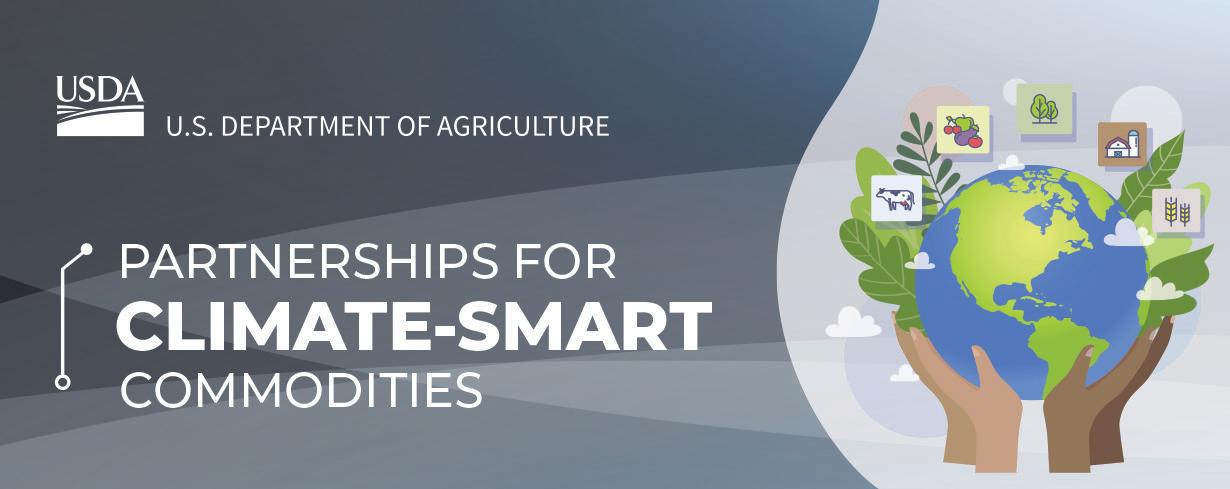
What is this environmental initiative?
■ The Biden-Harris Administration, via USDA, is investing up to $2.8 billion in 70 selected pilot projects under the first pool of the agency’s Partnerships for Climate-Smart Commodities program. Projects from the second funding pool will be announced later this year. Ultimately, USDA’s anticipated investment will triple to more than $3 billion in pilots designed to create market opportunities for American commodities produced using climate-smart production practices.
This industry voluntary sustainability initiative launched in 2020 is enlisting American cotton producers who will commit to providing sustainably grown cotton that not only will meet the needs of brands/retailers in the fashion and textile industries but ultimately protect and preserve our planet.
The Climate Smart Cotton Program, one of the 14 top funded projects selected by USDA, will be a collaborative effort with Cotton Incorporated and the NCC’s export promotion arm, Cotton Council International; the Soil Health Institute; the Soil and Water Outcomes Fund; Alabama A&M University; North Carolina A&T University; Texas A&M University’s AgriLife Research; and Agricenter International in Memphis. Target Corporation also is supporting the project through cost-share funding.
How can this new endeavor benefit the industry?
USDA’s new Partnerships for Climate-Smart Commodities Program includes a cotton project led by the U.S. Cotton Trust Protocol®.
These initial projects will expand markets for climate-smart commodities, leverage the greenhouse gas benefits of climate-smart commodity production and provide direct, meaningful benefits to production agriculture. Applicants submitted more than 450 project proposals in this first funding pool, and the strength of the projects identified led USDA to increase its investment in this opportunity from the initial $1 billion announced earlier this year. A complete list of the projects approved in the first funding pool is at www.usda.gov/climate-solutions/climate-smart-commodities/projects.
Who is carrying out the cotton project?
■ Expected to be carried out in all 17 Cotton Belt states, the U.S. Climate Smart Cotton Program will be led by the U.S. Cotton Trust Protocol®.
■ The $90 million of funding allocated to the U.S. Climate Smart Cotton Program is a major investment that will provide technical and financial assistance to more than 1,000 U.S. cotton producers with the ultimate benefit of building markets for climate-smart cotton. The pilot project is an important step in providing the necessary resources needed for these producers to learn, grow and explore new opportunities that will improve their environmental footprint.
Our industry looks forward to working with USDA on a comprehensive plan. Basically, though, the program will 1) further enhance U.S. cotton’s voluntary environmental stewardship efforts to reduce greenhouse gas emissions, soil loss and water and energy use, while increasing land efficiency and soil carbon and 2) advance adoption of climate-smart practices on more than 1 million acres, producing millions of bales of climate-smart cotton over five years, and demonstrating major carbon dioxide equivalent (CO2e) reductions and millions of dollars of economic benefits to producers.
Gary Adams is president/CEO of the National Cotton Council of America.
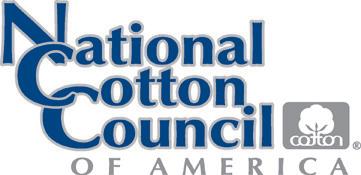

14 COTTON FARMING | NOVEMBER 2022 COTTONFARMING.COM
For consistent performance, year over year...
Local insights. Local results.
Dyna-Gro Seed’s focus is on delivering seed that meets the specific needs of your local area, and your farm. Pair it with advice from your Nutrien Ag Solutions® Crop Consultant, and see how Dyna-Gro Seed gets you closer to the results you want—year over year.
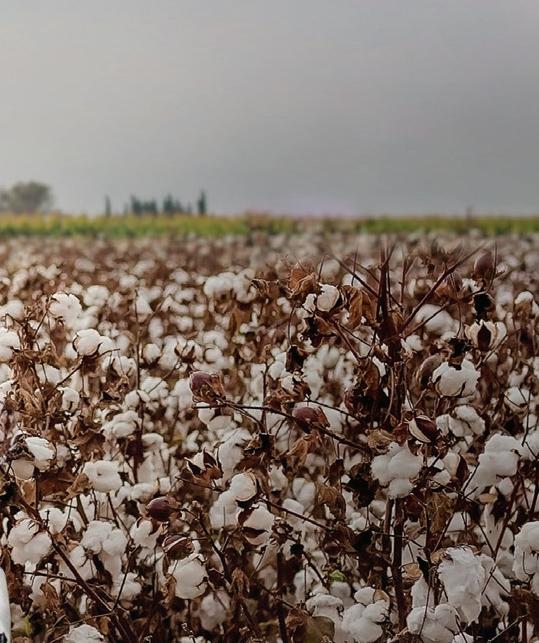
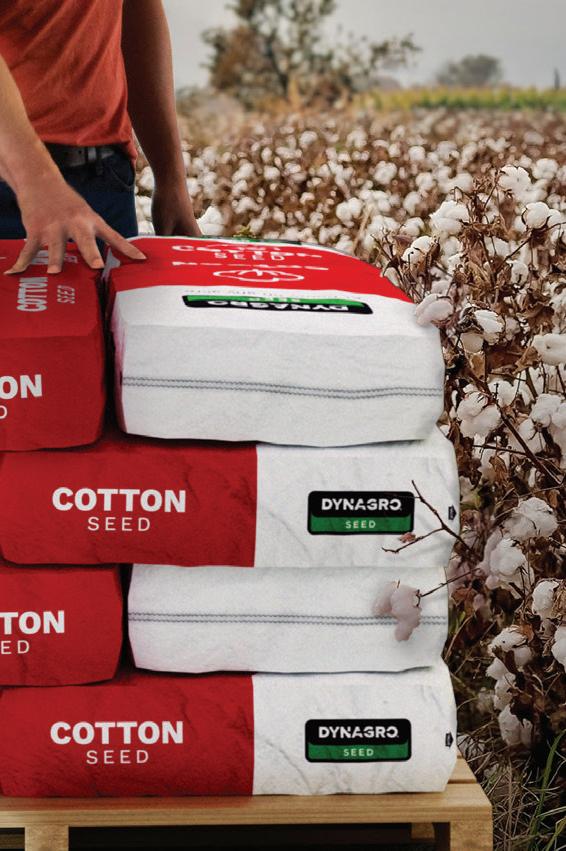

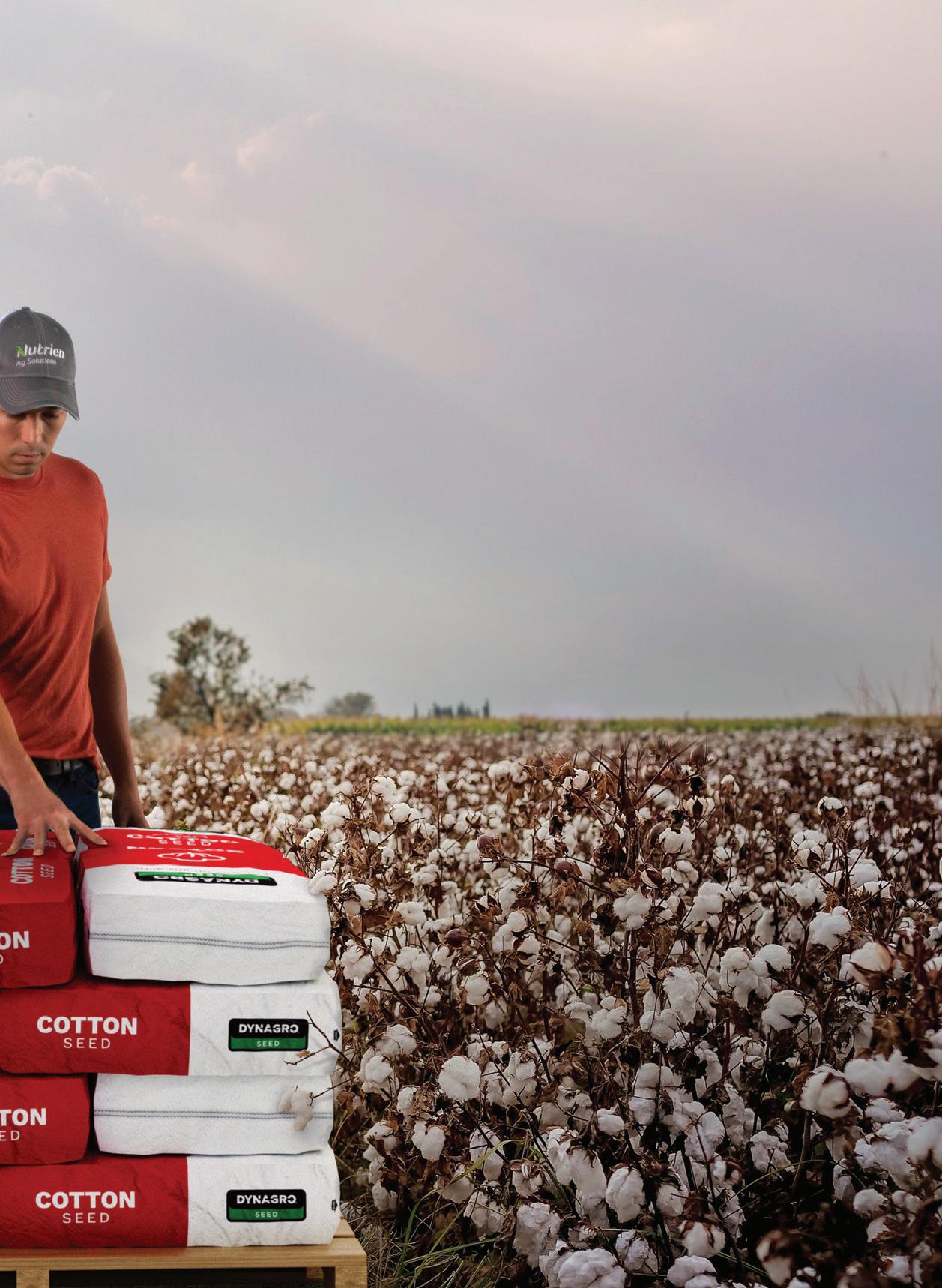
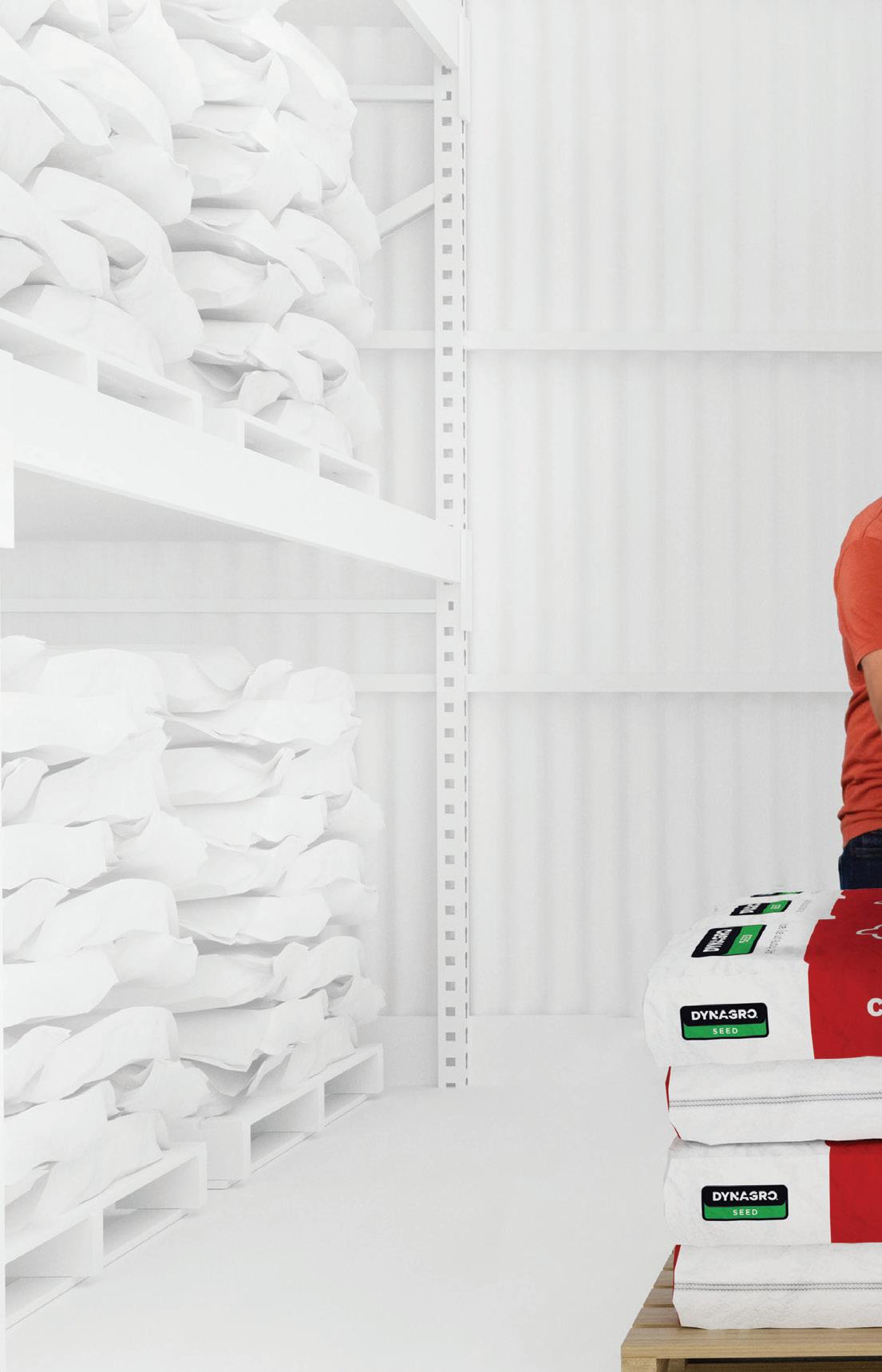
DynaGroSeed.com
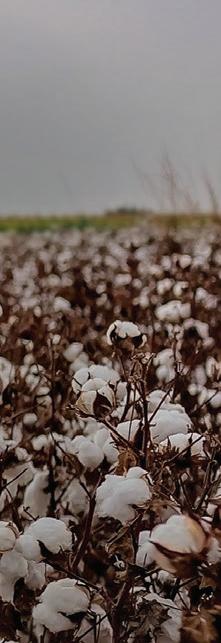
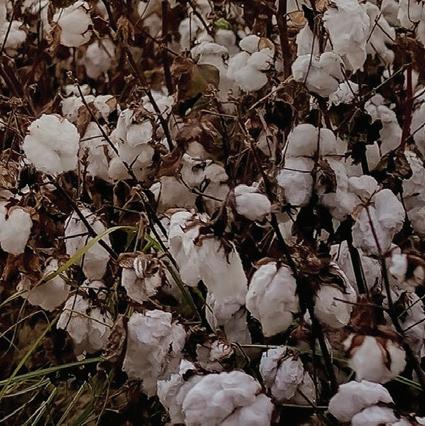

through:

other seed brand gets you closer
© 2022 Loveland Products, Inc. All Rights Reserved.
Dyna-Gro® Seed is a registered trademark of Loveland Products, Inc.
All other trademarks are the property of their respective owners.
...no
Available
Evaluating Potential Benefits Of Thrip Protection Technology
During the past two springs, many Mid-South producers faced cold, wet temperatures when planting their cotton crop. These harsh weather conditions can cause young cotton plants to grow slowly and sit idle waiting on more sun and warmer temperatures.
As if that situation wasn’t grim enough, producers often face another obstacle during that crucial time — insect pressure or infestation from thrips. Thrips are known to start feeding on young, vulnerable cotton plants causing new leaves to crinkle, which further prevents photosynthesis from occurring.
This year, producers and researchers alike noticed this happening to virtually all the young cotton crop when planted in cold and wet conditions, except for one field that was planted with seed that had been genetically modified to fight off these pesty thrips. This new biotechnology is called ThryvOn and was developed by Bayer Crop Science.
ThryvOn Technology started out as a technology to deter tarnished plant bugs. However, as researchers have continued to evaluate the technology, they have found that its true uniqueness and benefit comes in protecting early season cotton from thrips.
Sebe Brown, University of Tennessee, presents results from ThryvOn trials at a cotton breeders’ field day.
BY GRANT SAUM UNION CITY, TENNESSEE
Unlike other methods, ThryvOn Technology is bred into the plant, thus decreasing the need for insecticide applications. It doesn’t cause thrips or plant bugs to die from eating on the vegetative growths, instead, it makes the plant less desirable, thus causing a lower population of adults to lay their offspring.
Reduce Sprays, Maintain Yields
Dr. Ryan Kurtz, Senior Director, Agricultural and Environment Research at Cotton Incorporated said, “While our team hasn’t funded much research previously because the ThryvOn trait was stewarded and still in development, now that ThryvOn is closer to being in commercial fields, we are funding research to
evaluate how it will fit into existing management programs.”
Now the question is, what kind of potential benefit can ThryvOn provide to cotton production in the Mid-South and beyond? “Anything that could reduce Lygus and thrips sprays while maintaining yields will be beneficial to Mid-South growers,” Kurtz said.

According to research performed by the entomology team at the University of Tennessee at Jackson, ThryvOn cotton has key benefits that could change how growers in the Cotton Belt will manage insect pressure moving forward.
Their research has shown that ThryvOn cotton leads to better square retention, a 30% reduction in insecticide applications, and ultimately adding leniency into producer’s spray routines. Growers will also appreciate that ThryvOn Technology can stand alone during the early season when plants are most vulnerable without the need for elite seed treatment.
A cotton plot planted in West Tennessee during May of this year revealed results showing 250 to 300 thrips per five plants in non-ThryvOn cotton compared to only 50 thrips found per five ThryvOn cotton plants.
New Research Planned Cotton Incorporated is committed to funding new research aimed at making the best use of this trait in management systems for growers and has several university-level research trials going on now.
“Having a new tool for managing lygus and thrips will be great for the Mid-South not only for protecting the crop but also resistance management. This trait has the biggest potential for benefit in the Mid-South and Southeast but any growers across the belt with thrips and Lygus problems could potentially see benefit.” Kurtz concluded.
Grant Saum is the Mid-South Regional Communication Manager for The Cotton Board. Email him at gsaum@cottonboard. org.

16 COTTON FARMING | NOVEMBER 2022 COTTONFARMING.COM
MID-SOUTH REPORT
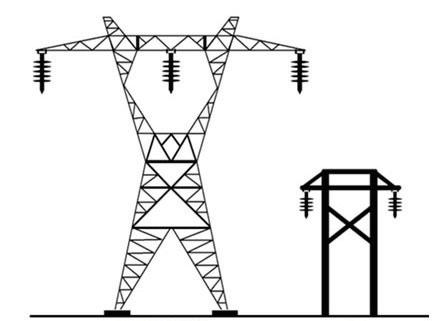

300 acres or more relatively level, clean farm or pastureland with a large transmission line crossing? Lease Your Land for Solar Power Production Extraordinary income to the right property owner(s) If your property qualifies or your property along with neighbors qualify you may potentially receive long term income. (20 – 40-year lease) $800 - $1500 Per acre Per year with incremental increases CALL (828)-817-5400 or (828)-817-9101 Email Us at: InnovativeSolarFarms@gmail.com Visit our website at innovativesolarsystemsllc.com to view recent projects Please Note the Four Essential Requirements Below Do You Have Power Lines Like This On Or Adjacent To Your Land? • Can Not be Subtranssmision Lines • Must be Transmission Power Lines • Must be 115 Kv to 345 Kv Do You or You and Your Neighbor Have 300+ Acres of Transmission lines crossing or within 200 yards of property State or county maintained road bordering the property No timberland or clear cuts 300 or more acres (must be in recent cultivation or in pasture or clear open range) Clean Farm or Pasture Land? Lease Us Your Land!
Todd says he considers all his clients “family” and will do whatever he can to help them and believes they feel the same way.
“This award is a reflection of the farmers I work with. They deserve all the credit for molding and shaping me. My farmers have made me what I am.”
Todd is active in the National Alliance of Independent Crop Consultants and also maintains a good rapport with university and industry personnel.
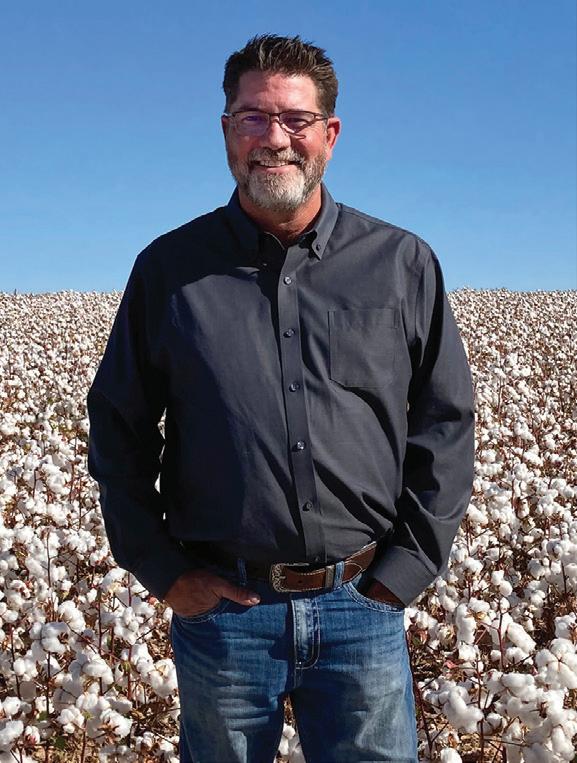
Texas Rural Land Buying Frenzy Wanes
Rural land sales volume fell 26.5% from mid-2021 to mid-2022, according to the Texas Land Market Latest Developments by the Texas Real Estate Research Center (TRERC) at Texas A&M University.
“Clearly activity appears to be slowing,” said TRERC Research Economist Dr. Charles Gilliland. “Demand for land, as reported by rural brokers, remains strong but has noticeably cooled from last year’s frenzied contest.”
Gilliland said below-asking-price offers have returned to some markets, something not seen since third quarter 2020. Fewer properties were for sale in second quarter 2022, but prices increased by 24.5% to $4,286 per acre statewide.
Total second-quarter dollar sales volume hit $3.6 billion, up 28%. That compares with a 76.7% first-quarter rise, and a 97.6% increase in fourth quarter 2021.
Prices increased by more than 21% statewide, except in Far West Texas, where they fell substantially, says the
News
report. Total acres transferred declined in several regions, and total sales dropped everywhere but Far West Texas.
“This trend toward rising prices and declining activity suggests demand is dropping,” Gilliland said. “If so, brokers may begin to find ebbing enthusiasm among potential buyers.”
2022 Row Crop Short Course

The 2022 Row Crop Short Course will be held at the Cotton Mill Conference Center near the campus of Mississippi State University on Dec. 5–7.
Lunch will be provided each day. Additionally, a social mixer and dinner will be held Monday evening at the Cotton Mill Conference Center. On Tuesday, a social event and steak/ shrimp dinner will be held at 6 p.m. at the Cotton Mill Conference Center.

All meals are free if you preregister before Nov. 30. Registration after Nov. 30, including at the door, is $40, which includes all meals.
For more information, contact Kathy Johnson at 662-325-2701 or Kjohnson@ pss.msstate.edu.
Cotton Farming
18 COTTON FARMING | NOVEMBER 2022 COTTONFARMING.COM
CCOY
Texas native James Todd, who was chosen by his peers as the 2021 Cotton Consultant of the Year, says, “We check every field every week and don’t cut corners.”
Cotton Consultant of the Year
James Todd 2021 CCOY AWARD RECIPIENT
established 1981
Cotton Consultant of the Year sponsored by
Industry
A Tale Of Two Seasons
Looking Back To Move Forward
Backpedal to 2021. That season was an eye-opener for Whit Player, Bishopville, South Carolina, cotton grower. He had purchased a new planter with granular applicator boxes.
Unsure of exactly what he wanted to do with the boxes, he thought back to the days of Temik (aldicarb) when his daddy hardly ever planted a row of cotton without aldicarb underneath it. Back then, they didn’t worry about thrips too much. It was almost a given Temik would take care of that problem.
With that thought long-embedded in his memory, Player decided to see if aldicarb — now sold as AgLogic aldicarb — would still give him the same peace of mind. So, he used it on a few of his 1,500 acres of cotton in 2021.
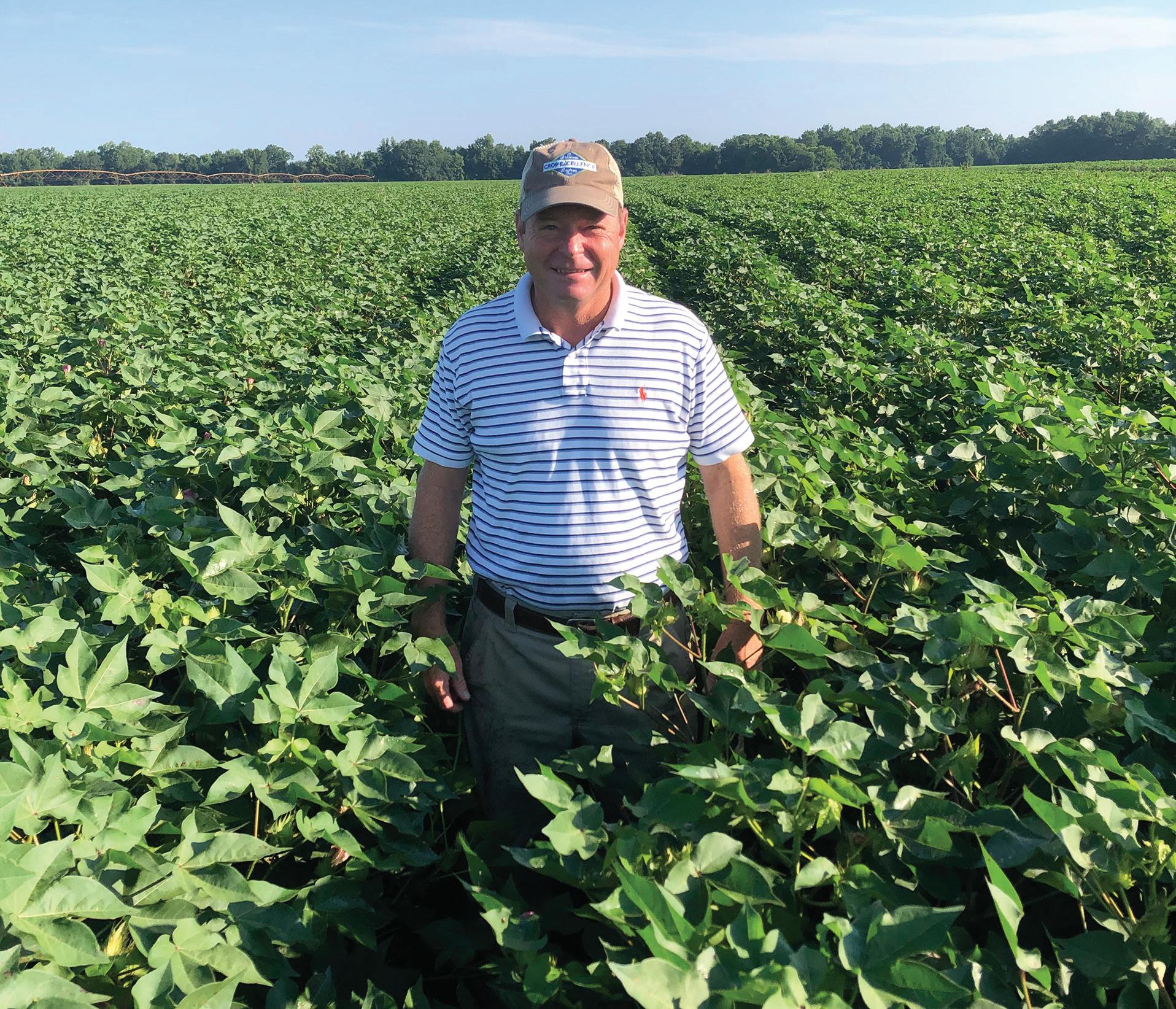
“Jerry Adams (JLA Consulting, Bishopville, South Carolina) came out and calibrated the planter,” he said. “He’s had years of experience with the product, so he rigged it up and let it go on some of the fields across different varieties, leaving part of the cotton untreated on purpose.”
An Experiment To Remember
As the 2021 season unfolded, even Adams couldn’t see much of a difference. “Maybe it’s one of those years when the cotton is just so good, you’re not going to see it,” he commented at the time.
Without even so much as a yield monitor to prove his theory one way or another, Player began harvesting his cotton in late October 2021.
“Even after defoliation we really weren’t expecting to see much difference between the treated and untreated,” he said. “We had the treated rows flagged throughout the season all the way through harvest. You couldn’t see the difference with a naked eye between treated or non-treated.”
That all changed when the picker started running. The round baler told the story.
“We started on the untreated, then switched over to the treated,” he said. “Again, I didn’t have a yield monitor on it, but you could definitely see it when it finished a bale.”
Fast Forward To Today
That was enough to convince Player he was going to make AgLogic a permanent fixture in his early season pest management program.
“When we lost Temik (aldicarb) for a few years, we moved on — or at least thought we had moved on,” he said. “Then we got it back. There’s nothing like remembering the performance of a product you thought you’d never see again. It may have a different name as AgLogic, but it’s the same product with the same benefits.”
A Plant Manager At Work
Those benefits are thrips control, nematode suppression and earliness, according to Player. But the one benefit that stood out to him last season was peace of mind. He didn’t have to be the full-time plant manager. AgLogic aldicarb handled that job for him. He felt it again this year when he put 5 lbs. of AgLogic aldicarb under his entire 1,500 acres of cotton.
“Before I started using aldicarb again, I was out there in the field shaking plants
trying to figure out how many thrips I had per plant and what to do about it,” he said. “In 2021 and again his year, I didn’t have to check for thrips. I didn’t even have to get out of the truck, although I did from time to time to make sure I was right. The leaves were big, healthy and nothing was eating on them. That was AgLogic at work.”
As Extension specialists and consultants reported heavy thrips pressure at the beginning of 2022 across much of the Cotton Belt, Player was unfazed and kept rolling down the highway.
Unfortunately, Mother Nature wasn’t too kind as the year progressed, but Player is satisfied with his choice. “We have a pretty decent crop,” he said. “I’ll use the product again in 2023. It’s not a record, but it’s still a solid crop. There is nothing like the earliness factor to give you a fighting chance. Plus, it’s nice not having to get out of your truck so much. I’ve got other things to do.”
Brenda Carol submitted this article on behalf of AgLogic.
TWITTER: @COTTONFARMING NOVEMBER 2022 | COTTON FARMING 19
Whit Player farms 1,500 acres of cotton near Bishopville, South Carolina.
Specialists
End-Of-Season Considerations
TEXAS Murilo Maeda
Cotton harvest has already started in West Texas (in our northern counties) as I write this in early October, and by the time you receive this issue of Cotton Farming, harvest activities should be well underway across much of the region.
The first USDA-AMS classing report from the Lubbock office covering the week ending Oct. 6 includes 1,158 bales (from three gins) and shows an average 36.39 staple, 1.13 length, 32.5 strength, 80.65 uniformity and 4.05 micronaire. Up to this point, warm and open weather have prevailed, but as expected, once we cross into October, we tend to see milder, cooler weather overall. While warm, open weather has (so far) favored good harvest aid activity, areas north of the Lamesa to Childress line have picked up anywhere from a few tenths to as much as 1.5 inches of rain over the past seven days. This, along with the cooler weather in the forecast, can delay harvest aid activity, so we encourage growers to take that into account as they match defoliation to their harvest capacity.
Not surprising, but still unfortunate, we continue to receive word about more acres being failed. This includes both dryland as well as irrigated fields that will continue to add to our already high 2.5 million failed acres of cotton this year. Regardless, for those of you going after a cotton crop, we wish you a plentiful, blessed harvest. Yet again — I would like to remind everyone of the increase in heavy equipment moving around this time of year. Whether during the day or at night, please pay extra attention to your surroundings and stay safe out there. mmaeda@ag.tamu.edu
TEXAS Ben McKnight

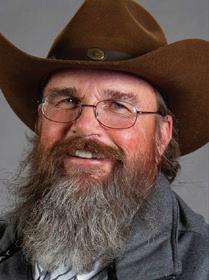
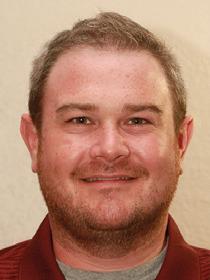
As I write this Oct. 6, dry weather has once again settled in for the majority of South, Central and East Texas. This recent round of dry weather has facilitated good conditions for harvesting the crop as growers are looking forward to closing the books on the 2022 growing season and beginning to look ahead to next year’s crop.

Variety selection remains, in my opinion, the most important decision a grower will make all year. In several ways, the decision on which variety to plant will impact how your pest management programs will shape up for the remainder of the year. With all the different trait packages currently available, now would be a great time to start evaluating which traits would bring value to your cotton growing operations.
If bacterial blight is an issue on your farm, considering a variety with resistance to the pathogen may potentially mitigate some losses. If glyphosate-resistant weeds have become more problematic, utilizing varieties with different herbicide-resistance traits and rotating herbicide modes of action can help with combatting these yield-robbing weed pests.
In addition to considering variety trait packages, yield and fiber quality are perhaps the most important characteristic to consider when identifying potential varieties to grow in 2023. Results from variety trials can provide some insight regarding variety performance and can be extremely helpful for making your variety decisions for the upcoming year. Rather than just considering the 2022 Texas A&M RACE trial results, I encourage growers to go back a few years to evaluate how the different varieties performed across multiple years. Assuming the variety has been evaluated in previous years’ trials along with 2022, we can use this method to identify varieties that continue to perform well across different lo-
cations and different years. The 2022 RACE trial results will be published online in December and can be found at varietytesting.tamu.edu. Also, mark your calendars for the 34th Annual Texas Plant Protection Conference Dec. 6 - 7 in Bryan, Texas. More information on the conference can be found at texasplantprotection.com. bmcknight@tamu.edu
LOUISIANA Matt Foster
As we approach mid-October, approximately 60% of the cotton acres in the state have been harvested.
Harvest conditions have been excellent; however, temperatures have recently dropped, which can hinder boll opening and the efficacy of some harvest aid products.
We hope to finish harvesting by the end of October/ early November. Louisiana will harvest around 190,000 acres of cotton this year, compared to 110,000 acres in 2021.
Lint yields across the state are extremely variable due to hot and dry conditions during most of the growing season, along with heavy amounts of rainfall in August. Yield estimates for the state are projected to be around 800 lbs. to 875 lbs. of lint per acre. Most growers that I’ve spoken with were expecting an above-average cotton crop this year, but mother nature had different plans.
Following harvest, growers should concentrate on soil fertility needs for the 2023 crop. The main purposes of a soil test are to indicate the current nutrient levels in the soil and aid in developing a fertilizer/lime program. A solid program can be developed by combining soil test information with cropping history and the overall yield potential of the field. Routine soil testing can also aid in monitoring trends/changes in your overall production system, thus balancing your fertility program with other production inputs. Since soil test levels can change during the year, samples should be taken at the same time each year so results can be compared year to year. Nutrient levels are generally lower in summer and fall compared to winter and spring. Generally, the best time to sample is one to six months prior to planting. mfoster@agcenter.lsu.edu
ARKANSAS Bill Robertson
As we turned the calendar into October, harvest progress of the 2022 crop basically mirrored the fiveyear average. The long-term forecast of dry weather into mid-October will help to keep harvest progress at a fast, steady pace. While our early cotton in far south Arkansas experienced significant hardlock, much of the rest of the state is seeing little loss at this time.
Big nice fluffy bolls all the way to the top of the plant, coupled with basically every boll the plant produced getting into the module, is a recipe for high yields. The almost ideal weather through nearly the entire month of September is a big reason for this and is likely our highlight of the season so far.
The most recent Crop Production report for Arkansas released in September by USDA-NASS estimated cotton production at 1.6 million bales, 365,000 bales above last year. Based on conditions as of Sept. 1, yield is expected to average 1,219 lbs. per harvested acre. This would represent our second highest yield on record. Our five-year lint yield average is 1,184 lbs. per harvested acre.
Most are well into planning for the 2023 season. Soil samples for fertility, as well as nematodes, will likely be pulled in great numbers after harvest and stalk destruction are complete. Look to the University of Ar-
20 COTTON FARMING | NOVEMBER 2022 COTTONFARMING.COM
Speaking
Specialists Speaking
kansas variety testing webpage at https://arkansas-variety-testing.uark. edu/ for results from county and OVTs.






e Arkansas Crop Management Conference and County production meetings are scheduled to be live events this year, and dates have been set. Contact your county Extension agent for details on meetings and other questions you may have. brobertson@uada.edu
TENNESSEE Tyson Raper

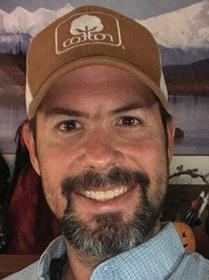
As I write this Oct. 2, harvest has just begun in Tennessee, with only a handful of elds picked. What a rollercoaster of a year. Early May initially introduced herself as one of the best planting windows we’d seen in the past ve, if not 10, years. Unfortunately, many saw that window crash closed with excessive rainfalls; o en, 1 inch to 3 inches of rainfall seemed to arrive immediately a er the planter le the eld. en, only a few weeks into June, the rain altogether stopped until nearly the end of July. August will go down as one of the wetter — if not wettest — months on record. And then September broke dry and nished cold.
Perspective is important; we are fortunate and grateful to be where we are relative to where we thought we might be at the end of July. Still, this will be a tough year for many. If September could have given us a few more degrees and October would have been forgiving, we might have made the crop we thought we had at the end of August. is will be my
rst year in Tennessee where the earliest-planted cotton will fall hundreds of pounds short of the later-planted cotton. I also suspect our earliest planted will struggle with abnormally high micronaire. ere are a few lessons I think can be learned from this year and applied as we move forward. First, we kept thin stands in many elds, and I think, overall, most have been impressed with retention and ease of management at these populations; some are targeting a plant population that is too high and reducing seeding rate (for some) may result in similar yields with reduced expenses. Additionally, we will have a very good understanding of variety performance and placement a er this year. I hope each of you has a productive and safe harvest that wraps up well before anksgiving! traper@utk.edu


MISSISSIPPI Brian Pieralisi
It’s hard to believe we are writing about end-of-year considerations, but it’s time to start thinking about 2023. I’m writing this Oct. 5, and harvest is in full swing in Mississippi. Many farmers in the Delta have spent their 10 to 14 days in the trenches and are completely done with all harvest activities. However, there’s still a lot of cotton across the state awaiting harvest, but given the weather forecast, it won’t be long before everyone is nished. It amazes me how technology and management practices have compressed our growing seasons into a few short months. Anyway, cotton

COTTON FARMINGNOVEMBER 2022
Cotton harvest is well under way in most regions a er a rollercoaster year of high costs and tumultuous weather.
CASSIDY NEMEC
yields in Mississippi are variable across the state, with planting date, variety, environmental conditions and the interactions between these factors contributing to the range in cotton yields.
Thinking about “end of the year considerations,” I encourage taking advantage of the early harvest and dry conditions to prepare fields for next year’s crop and to catch up on any soil sampling that may need to be addressed. With high fertilizer costs, some growers have shifted their management strategies away from inorganic, soil-applied fertilizers to cash flow their budget. Soil sampling is important to monitor fertility levels to keep from dropping into a deficiency scenario, which is much more expensive and time consuming to correct.
Lastly, review as much variety performance data as possible when making selection decisions. Moving into 2023, growers are starting to favor certain varieties more than others and ordering seed before harvest is over. Other growers are still having trouble finding the variety that is a perfect fit for their farm. Looking at multi-year performance data will help in making these selection decisions. Enjoy the fall weather as we prepare for another round! bkp4@msstate.edu
ALABAMA Steve M. Brown

Sept. 12 marked a significant weather change for most of Alabama. We went from frequent rainfall, persistent high humidity and extensive cloud cover to prevailing drier, sunny, breezy conditions. Perfect for cotton maturation — except that it was slightly cooler than normal. And thankfully, we missed Hurricane Ian altogether. Weeks of sunshine combined with lower humidity and light winds make for great picking. While we lost some lower bolls to hardlock and boll rot, the latter half of September and early days of October boosted our prospects. Moreover, the general forecast for much of October was also favorable. Weather patterns and initial picking reports encourage optimism that yields will improve over early predictions. By the time this is read, predictions and estimates will give way to real numbers. Our five-year average yield calculated against planted acres is about 850 lbs./acre. On this date (Oct. 4), I’m still in guessing mode, but I think we should surpass 850 lbs./acre considerably. My guesses contrast preliminary USDA numbers, so I could be eating crow but don’t shoot and ship the bird just yet.
For now, cotton across the state has a welcome, white beauty.
Some areas should finish harvest early, not because of a short crop but rather because extreme heat in June and July propelled cotton development. Arguably, the overcast conditions in late summer slowed the pace somewhat, but many could wrap up picking two to three weeks sooner than normal, hurried along by crop maturity and great harvest weather.
As we finish, it’s helpful to think about what we learned this season, what went well or didn’t, and what changes we might make for next year. Hopefully, at season’s end, each farm family and group will be able to reflect upon the year with a sense of gratitude for safety and bounty.
cottonbrown@auburn.edu
FLORIDA David Wright
Most cotton will harvest in October and will be finished in November from late-planted fields. It is time to plant cover crops and winter crops and pull soil samples for nematodes and nutrient testing. The economic climate changes for crops every year — with fertilizer prices being the big story for 2022.
Decisions need to be made to do a better job in the future, as phosphorus and potassium prices have remained high. Drought in the deep south in late season, as well as Ukraine impact on input prices, bring uncertainty for growers to consider in the coming year’s crop.

Some of our long-term research trials indicate that using cover crops and winter grazing livestock can be beneficial for recycling nutrients as well as utilizing the land and cover crops. Our data from a 22-year rotation with winter grazing cattle shows that irrigation and fertilization may be reduced as much as 40% to 60%, lowering input costs and reducing risks, while increasing yields of row crops. wright@ufl.edu
GEORGIA Camp Hand
The best time of year — crossing the finish line. Nothing beats seeing the hard work of a long season come to fruition. This is a busy and stressful time for growers, but there is always something to learn. Make sure to make note of problematic areas in fields as you are picking. Whether nematodes, fertility or weeds that produced seed, we can make a plan to get ready for next season. It’s never too early to start thinking about the next crop.
As I write this Oct. 7, I’m hearing yields all over the board, which I would consider normal. We didn’t have a great August in terms of “finishing” our crop. We had a lot of hardlock and rot that, at the time, many thought would devastate our crop. I hand picked some cotton in a dryland field planted April 18 just a few weeks ago and thought, with as much hardlock and lack of burr integrity that I saw, it wouldn’t be worth picking. But I was very surprised when we ran a picker through there to see that we were averaging around two bales. The words “pleasant surprise” or “better than expected” have been said to me and by me more than once.
Overall, it looks like we’re off to a good start in terms of fiber quality. Nothing is jumping out in terms of being way off, which is a good thing. There is very little extraneous matter thus far as well.
It feels like we’re ahead of schedule in terms of harvest so far, which may partially have to do with the scare we got from Hurricane Ian. Luckily, it missed us this time, and all we got was a little wind. I think we all feel like we dodged a bullet there, but we still have a ways to go as of the first week of October.
Let’s continue to be timely with harvest, and be safe out there. As always, if you ever need anything, your local UGA county Extension agent and specialists are here to help! Don’t hesitate to reach out. camphand@ uga.edu
NORTH CAROLINA Guy Collins
I’m actually writing this on Sept. 30, while Hurricane Ian is making its way through our state. We’re hoping and praying that the impact is minimal, but some degree of cotton loss is expected. We were really hoping to miss these tropical systems this year, and even this one is more of a direct hit than was forecasted during most of the week prior.
By the time this article is published, harvest should be winding down soon. This was a dry year for most of North Carolina (prior to Ian’s arrival) — especially during late August and early September for most areas — and our crop therefore trended about two weeks early during the early fall. As I write this, the forecast suggests a drastic cool-down is on the way, which is also slightly earlier than normal. Most of our crop was relatively mature by the time Ian hit, which is bad in the sense that we had a lot of open bolls at the time. However, most of our closed bolls were relatively mature, so boll opening was less of a concern this year. Yields are expected to be variable and decent in places.

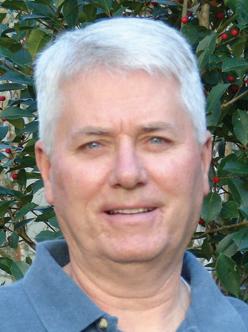
Variety data is usually available in early December and will be published on cotton.ces.ncsu.edu. It will also appear in the NC Cotton Variety Performance Calculator (trials.ces.ncsu.edu/cotton) as soon as data becomes available.
guy_collins@ncsu.edu
22 COTTON FARMING | NOVEMBER 2022 COTTONFARMING.COM
Specialists Speaking
GROWING IS IN YOUR HANDS. PROTECTING IS IN OURS.



























It’s hard work. And important work. For both of us. A shared passion to grow the best cotton. You give it your all with countless hours in the field. And our tried and tested products support your hard work to ensure success from seed to gin. Not everyone is cut out for this. We are. Like you. Made for this. Learn more at GrowBetterCotton.com Engenia® herbicide is a U.S. EPA Restricted Use Pesticide. Every application of Engenia herbicide requires the use of a pH buffering adjuvant such as AEGOS Buffering Technology. Additional state restrictions may apply. Always read and follow label directions. Engenia, Liberty, Outlook and Zidua are registered trademarks of BASF. © 2022 BASF Corporation. All rights reserved.
Ginners Marketplace
Mystique Surrounds Season’s First Bale Of Cotton
Early summer across the Cotton Belt often means weed and disease pressure, but it also signals that coveted first bale of the season.
According to U.S. Senator John Cornyn (Texas), “The tradition of certifying the nation’s First Bale of the year dates back to the 1800s when the grower of the First Bale was required to transport the cotton to the Houston Cotton Exchange for certification. After verifying its status as the first bale of cotton to be harvested that year in the United States, the Exchange would put the bale up for auction.

“This process continued, uninterrupted, for many years until 1953, when the Harlingen Cotton Committee successfully petitioned the Houston Cotton Exchange for the rights to auction the First Bale. As a result of this hallmark agreement, for the past 60 years the Harlingen Cotton Committee of the Harlingen Area Chamber of Commerce has been solely responsible for certifying the nation’s First Bale of cotton each year. And for each of those 60 years, the First Bale has been grown in the fertile Rio Grande Valley.”
The proceeds generated by this event help fund scholarships for local youth who are pursuing agriculture-related degrees.
This year, Wesley Vanderpool in Alamo, Texas, harvested that first bale June 23, at 1,989 pounds of cotton with the Stoneville ST4990 variety. Vanderpool’s harvested bale was then ginned at the Willacy Co-Op Gin.
From le to right: Mike Foster, Five Points Gin manager; Gaines County producers Justina and Corny Enns, who harvested the rst bale of cotton for 2022 in the Texas High Plains; and Kurt Brown, Seminole Chamber of Commerce.

produced from Deltapine 1646.
“I wasn’t planning on competing for the first bale or anything,” said Corny Enns, Gaines County farmer since 1987.
As he was driving by one of his fields, Enns saw some bolls opening. “I decided to call down to Five Points and see if anyone had brought anything in yet. They said no, so I sprayed about 15 acres and ended up stripping 12.”
The first bale was auctioned o by the pound at the annual Gaines County Ag & Oil Appreciation Day hosted by the Seminole Chamber of Commerce Sept. 15.
The seven gins in Gaines County each put in $1,000 for the first bale, so the grower is guaranteed $7,000 in prize money in addition to the money brought in from the auction.
“It’s been such a strange year, we weren’t sure anyone would try to make the first bale,” said Mike Foster, manager of Five Points Gin. “I’m proud for the Enns family who have been my customers since 2010.”
Wesley Vanderpool (center le ) harvested this year’s rst bale of cotton — a Stoneville ST4990 variety — near Alamo, Texas. Also pictured with Wesley are, from le to right, Meranda Easter; Wesley’s partner, Verne Vanderpool (center right); and Luke Etheredge.
First Texas High Plains Bale
The first High Plains bale for 2022 was delivered to Five Points Gin in Gaines County Sept. 6, 2022, by Gaines County producers Corny and Justina Enns. Harvested northwest of Seminole, the Enns brought in 2,880 pounds of seed cotton

Cotton Ginners Marketplace 24 COTTON FARMING NOVEMBER 2022 COTTONFARMING.COM COTTON
COTTON FARMING IS THE OFFICIAL PUBLICATION OF THE GINNING INDUSTRY.
An
informative email summary of your gin’s daily performance.
Text 662-809-9730 for an
example
report



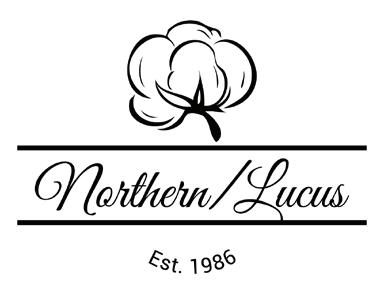
Cotton Ginners Marketplace TWITTER: @COTTONFARMING NOVEMBER 2022 | COTTON FARMING 25 Minimize Seed Bridging 50% Larger Square Hydraulic Doors Call Jim - (972) 381-8899 / cliffgranberrycorp.com HOPPER CONVERSION KIT “With the conversions, we are loading trailers in a couple of minutes. The man that operates our seed houses loves the hydraulic doors.” Adams Land Company – Leachville, AR NORTHERN / LUCUS MACHINE, INC 1116 E SLATON HWY LUBBOCK, TX 79404 FOR SALE: 1 – 158 GIN STAND W/ CONTROLS & 700 FEEDER MANUFACTURER OF HI- CAPACITY LINT CLEANING SYSTEMS IN 86” TO 110” WIDTHS NEW 60”, 72”, & 80” OVERSHOT BATTERY CONDENSERS 96” TO 144” INCLINE CLEANERS, STICK MACHINES, & AIR LINE SEPARATORS HIGH CAPACITY VACUUMS USED & FACTORY REBUILT GIN MACHINERY PLASTIC BALING PRESSES COMPLETE LINE OF REPAIR PARTS FOR MURRAY, MITCHELL, H.E., CONSOLIDATED, CONTINENTAL, MOSS, LUMMUS, HORN, & CMI 806-745-8156 1-800-776-8182 FAX: 806-745-0564 NORTHERNLUCUS@YAHOO.COM WWW.NORTHERNLUCUS.COM
South Texas Cotton Story Refresh
Itold my cotton story here October 2020 on our (I have three younger siblings) 188acre, dryland cotton farm in Willacy County, Texas. Several items need updating. Thank you for the opportunity.
For one, I forgot my childhood nickname. My 73-year-old thinning hair is grayish brown.

When I was a kid, it was very blond, almost white; and also curly. My nickname was, in fact, “Cottonhead” or “Cotton” for short. I remember playing Little League. “Don’t drop the ball, Cottonhead. Hit a single, Cotton.”
Willacy County is one of the four counties that make up the Rio Grande Valley in extreme South Texas. Some areas there have a consistent wind. The first wind farm to generate electricity in the Valley went in 20 years ago. It is still a shock to me to drive around my old stomping grounds and see hundreds of these massive turbines.
As a kid growing up and driving out in the country in the 1950s and 1960s, I remember windmills well. These did not generate electricity, but raised water from aquifers (ample then, some almost depleted now) to water the cows, and maybe even do a little row crops irrigation with the right plumbing and labor. At 40-feet tall, they were and are piddling compared to today’s monster wind turbines.
Aermotor was printed on 100% of the vanes of these quality wind-powered water pump systems. That company, formed in 1888, must have had a monopoly. It operates today under the same name of Aermotor Co. and is based in San Angelo, Texas.
A 125 turbine (2.17 megawatts per turbine) wind farm did go up in the area of our land, putting juice to the grid in February 2021. Big Sister lobbied for a turbine on our land. We did not get it. However, we are receiving the minimum annual income for one turbine, as if we had one. This is as the developer shorted us on the land holding fee (since reimbursed) due to a surveying error. The design was already done. Adding a turbine would have required re-application to the FAA as a commercial airport is 13 miles south-southwest of here. All in all, it’s a long story.
Texas leads the nation in renewables — mostly wind, some solar, a little hydro and a little geothermal. To sum
up, we are enjoying the feel good feeling of generating electricity without creating carbon contributing to global warming and permanent climate changes, resulting in environmental refugees by the millions worldwide today.
Due to the current drought, only 7.13 million acres of U.S. cotton were harvested this year, the lowest since 1868. Forty-three percent of planted cotton was abandoned — plowed under — as yield was not worth harvesting. Texas was even worse, 69% plowed under. However, Texas did have one bright spot. This was the Rio Grande Valley, which pretty much got the right amount of rain at the right time. Yields were a little more than two and three bales per acre dryland and irrigated.
Texas’ drought of record was 1950-57. As severe as today’s drought is, it pales to that in the 1950s. I remember it well, as the family had severe money problems. The number of Texas farms and ranches shrunk from 345,000 to 247,000. Thousands moved from farms and ranches and small towns to the cities looking for work, permanently as it turned out. Economic losses were $26 billion in 2022 dollars. Our land is dryland, so we watch and pray over the vagaries of the weather every year. We rent to brother farmers. We and they are not lucky every year, so a little extra income “as steady as the wind” is very welcome.
The four of us born 1949-1958 used cloth diapers. There was no choice. I remember changing diapers on the two youngest, eight and 10 years behind. I liked those cotton diapers, so white (like my hair!) and fluffy and soft. They also doubled well as burp rags. I recall not so fondly rinsing them with a water hose in the back yard. This prewash was beneficial before going into the washing machine. Clean was important for several reasons. For one, they were hung outside to dry, so more or less on display.
I married late at age 39. Our daughter was born 14 months later. At the time, there was much debate as to whether cloth or paper was better for baby, and also what was best for the environment. We opted for cloth diapers, using a service that picked up, washed at 190° F, and then delivered — still preferring cotton. Of course, we used paper some, such as when we were away from home.
I became a grandfather last March. That boy uses paper diapers of course. Things change. I don’t think you can even buy cloth diapers anymore, much less hire a service. And so it goes.
— Dean Fisher Houston, Texas bdeanfish@gmail.com
Cotton Farming’s back page is devoted to telling unusual “farm tales” or timely stories from across the Cotton Belt. Now it’s your turn. If you’ve got an interesting story to tell, send a short summary to csmith@onegrower.com. We look forward to hearing from you.
26 COTTON FARMING | NOVEMBER 2022 COTTONFARMING.COM My Turn
Dean Fisher
“My nickname was, in fact, ‘Cottonhead’ or ‘Cotton’ for short.”
















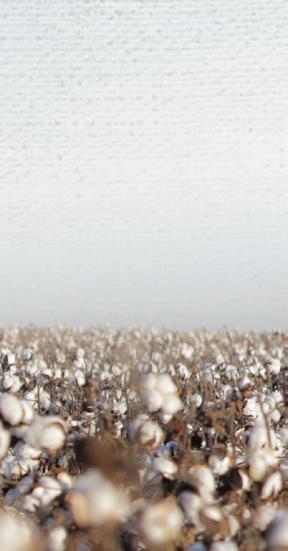
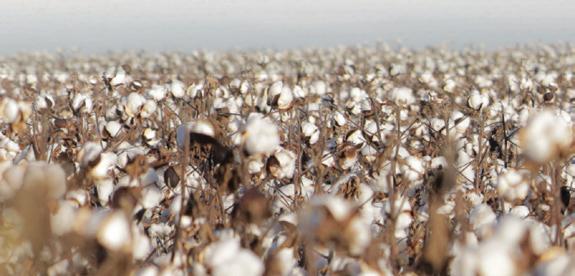
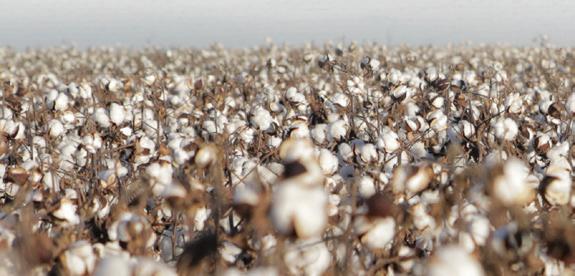
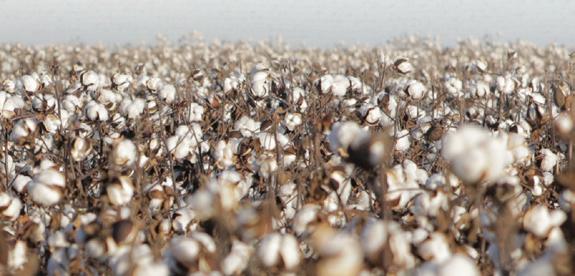
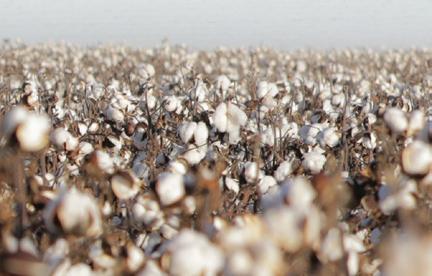

















The data referenced is from Cotton Incorporated’s Lifestyle Monitor™ survey and the 2016 Seal of Cotton survey. *Seal of Cotton™ introduced by Cotton Incorporated in 1973. CottonBoard.org consumers
of the















ALWAYS READ AND FOLLOW GRAIN MARKETING AND ALL OTHER STEWARDSHIP PRACTICES AND PESTICIDE LABEL DIRECTIONS. Bayer, Bayer Cross and Deltapine® are registered trademarks of Bayer Group. ©2022 Bayer Group. All Rights Reserved. The Cotton seed worthy
South. deltapine.com










































































































































































































































